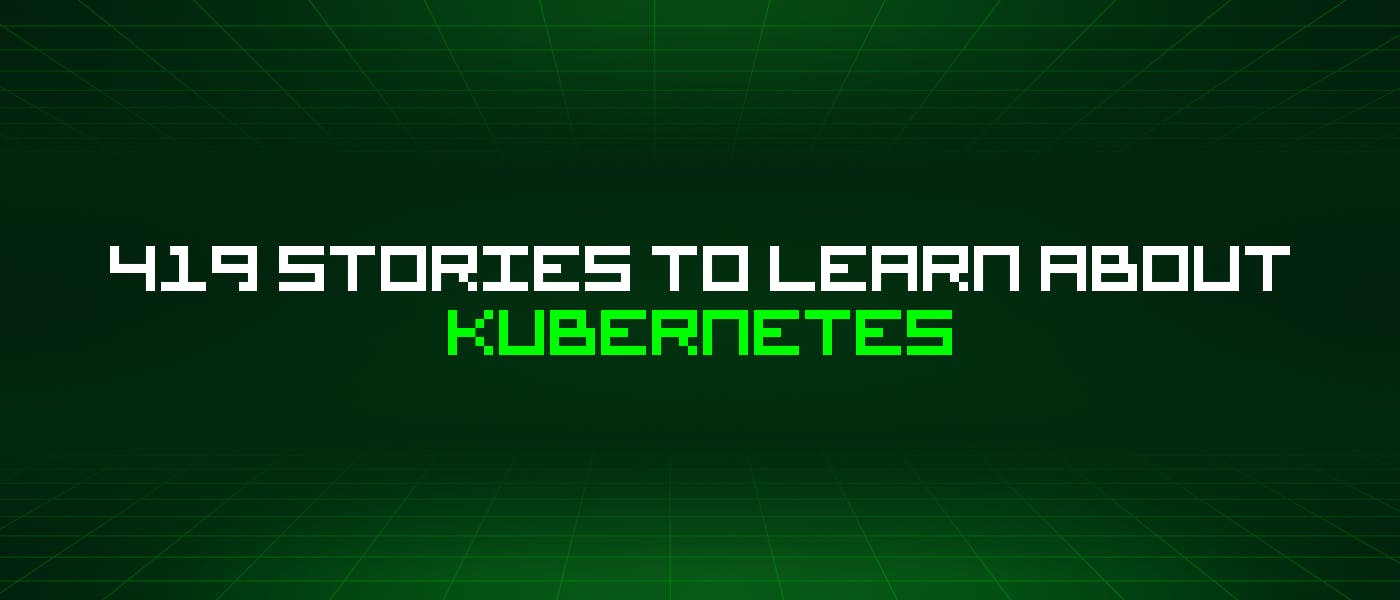Let's learn about Kubernetes via these 419 free stories. They are ordered by most time reading created on HackerNoon. Visit the /Learn Repo to find the most read stories about any technology.
Is your system distributed, or just all over the place?
1. A Guide to Taints and Tolerations, Node Affinity and Node Selector
 Taint and affinity in Kubernetes are two mechanisms that allow users to specify how pods should be scheduled on nodes in a cluster.
Taint and affinity in Kubernetes are two mechanisms that allow users to specify how pods should be scheduled on nodes in a cluster.
2. Kubernetes Explained Simply: Data Extraction With JSON Path [Part 8]
 kubectl can pull a lot of data about our deployments and pod. Most of the time, we humans are the recipients of that information, and kubectl obliges by nicely formatting things in pretty tables.
kubectl can pull a lot of data about our deployments and pod. Most of the time, we humans are the recipients of that information, and kubectl obliges by nicely formatting things in pretty tables.
3. Kubernetes Deprecates Docker to Support the Open Container Initiative
 Kubernetes Deprecating Docker?! Let Me Explain Containers in K8s.
Kubernetes Deprecating Docker?! Let Me Explain Containers in K8s.
4. A Better Way to Monitor Your Laravel Services
 Kubernetes or auto scaling can create a bit of mess in your monitoring data. Learn how to monitor your Laravel application by services instead of hostnames.
Kubernetes or auto scaling can create a bit of mess in your monitoring data. Learn how to monitor your Laravel application by services instead of hostnames.
5. How To Make Docker Images with Jenkins Pipelines
 Jenkins Pipeline is a powerful tool when you are using Jenkins to automate your deployments. Flexible and customized actions split between stages are a good reason to try this feature.
Jenkins Pipeline is a powerful tool when you are using Jenkins to automate your deployments. Flexible and customized actions split between stages are a good reason to try this feature.
6. CI/CD Workflow for SpringBoot Applications on Kubernetes via Skaffold
 In this article, we'll explain how to create a CI/CD workflow for a SpringBoot Application deployed to Kubernetes using Skaffold.
In this article, we'll explain how to create a CI/CD workflow for a SpringBoot Application deployed to Kubernetes using Skaffold.
7. 5 Ways to Overcome CI/CD Challenges
 5 Challenges of CI/CD - how you can solve them!
5 Challenges of CI/CD - how you can solve them!
8. Mount file to Kubernetes Pod Without Deleting the Existing File

9. Containers vs. Serverless: Which is Better for DevOps?
 Managing your own containers versus letting serverless do it for you - when to choose what? Let's go over the pros and cons.
Managing your own containers versus letting serverless do it for you - when to choose what? Let's go over the pros and cons.
10. Digital Marketing and Web Design with Noonies Nominee, Elizabeth
 An interview with Elizabeth, Chief Editor at Evrone.com, a web design and development company.
An interview with Elizabeth, Chief Editor at Evrone.com, a web design and development company.
11. Getting Started Provisioning an AWS EKS Kubernetes Cluster with Terraform
 Learn how to provision an AWS EKS Kubernetes cluster with Terraform. See a full step-by-step tutorial.
Learn how to provision an AWS EKS Kubernetes cluster with Terraform. See a full step-by-step tutorial.
12. 300 Scholarships Up For Grabs at The School of Cloud Computing Courtesy Udacity and SUSE
 Apply today for Udacity’s SUSE Cloud Native Foundations Scholarship program and learn the skills you need to become a cloud native developer.
Apply today for Udacity’s SUSE Cloud Native Foundations Scholarship program and learn the skills you need to become a cloud native developer.
13. Today I Learned: Pull Docker Image from GCR (Google Container Registry) in any non-GCP Kubernetes…
 How to a pull Docker Image from GCR in any non-GCP Kubernetes cluster
How to a pull Docker Image from GCR in any non-GCP Kubernetes cluster
14. Failure Modes: Why You Need To Know Them
 What are bimodal failure modes and how to avoid them
What are bimodal failure modes and how to avoid them
15. Your Guide To Kubernetes Monitoring
 The blog provides information on what is Kubernetes monitoring, why it is important, and major tools & key metrics used for K8s monitoring. Read in detail!
The blog provides information on what is Kubernetes monitoring, why it is important, and major tools & key metrics used for K8s monitoring. Read in detail!
16. How to Build a Decoupled Microservice Using Materialize
 One way to handle data in microservice architectures is to use decoupled microservices architecture. This form of architecture can bring many benefits.
One way to handle data in microservice architectures is to use decoupled microservices architecture. This form of architecture can bring many benefits.
17. How To NOT pass the Certified Kubernetes Administrator Exam
 The best of bad advices about CKA
The best of bad advices about CKA
18. How To Get Better at Kubernetes
 Here are some operators and advanced use cases for them to help you level up your Kubernetes game and to get even better at programming with that language.
Here are some operators and advanced use cases for them to help you level up your Kubernetes game and to get even better at programming with that language.
19. Monitor Your Kubernetes Cluster Events With EventRouter, Golang, and Kafka
 In this article, I will show you how to build such a pipeline for processing and storing Kubernetes cluster events.
In this article, I will show you how to build such a pipeline for processing and storing Kubernetes cluster events.
20. The Rise of Containers: Comparing Amazon ECS and Google Kubernetes
 Here's how Google Kubernetes, a container orchestration platform differs from Amazon ECS, a container orchestration service!
Here's how Google Kubernetes, a container orchestration platform differs from Amazon ECS, a container orchestration service!
21. Kubernetes vs. OpenShift: A Thorough Comparison
 Gartner predicts that by 2022, more than 75% of global organizations will be running containerized applications in production, which is a significant increase from fewer than 30% today
Gartner predicts that by 2022, more than 75% of global organizations will be running containerized applications in production, which is a significant increase from fewer than 30% today
22. Can Multi-Cloud Kubernetes Platforms Make Infrastructure Prices Comparable?
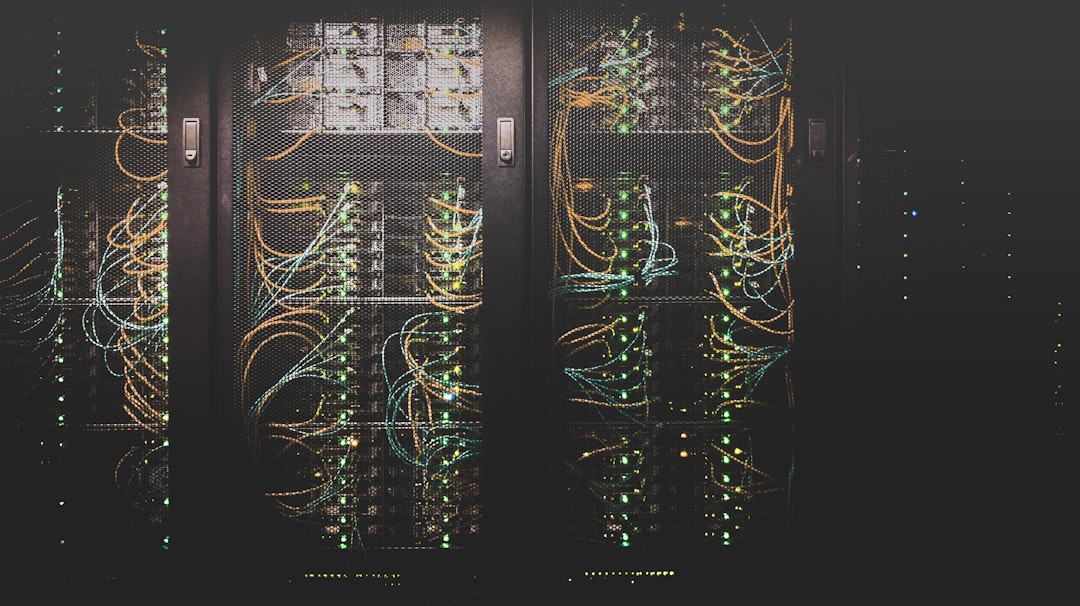
23. Kubernetes Cluster Must-Haves To Be Production Ready
 What you always have as a Kubernetes cluster is usually always the bare minimum.
What you always have as a Kubernetes cluster is usually always the bare minimum.
24. 3 Top Tools for Implementing Kubernetes Observability
 Here, in this blog, we’ve discussed three important tools to implement Kubernetes Observability. Let’s take a look!
Here, in this blog, we’ve discussed three important tools to implement Kubernetes Observability. Let’s take a look!
25. Scan Kubernetes RBAC with Kubescape and Kubiscan
 Exploring Kubernetes ecosystem tools like Kubiscan and Kubescape to scan and evaluate RBAC model of GKE cluster.
Exploring Kubernetes ecosystem tools like Kubiscan and Kubescape to scan and evaluate RBAC model of GKE cluster.
26. GitLab Runners in EKS with AWS IAM
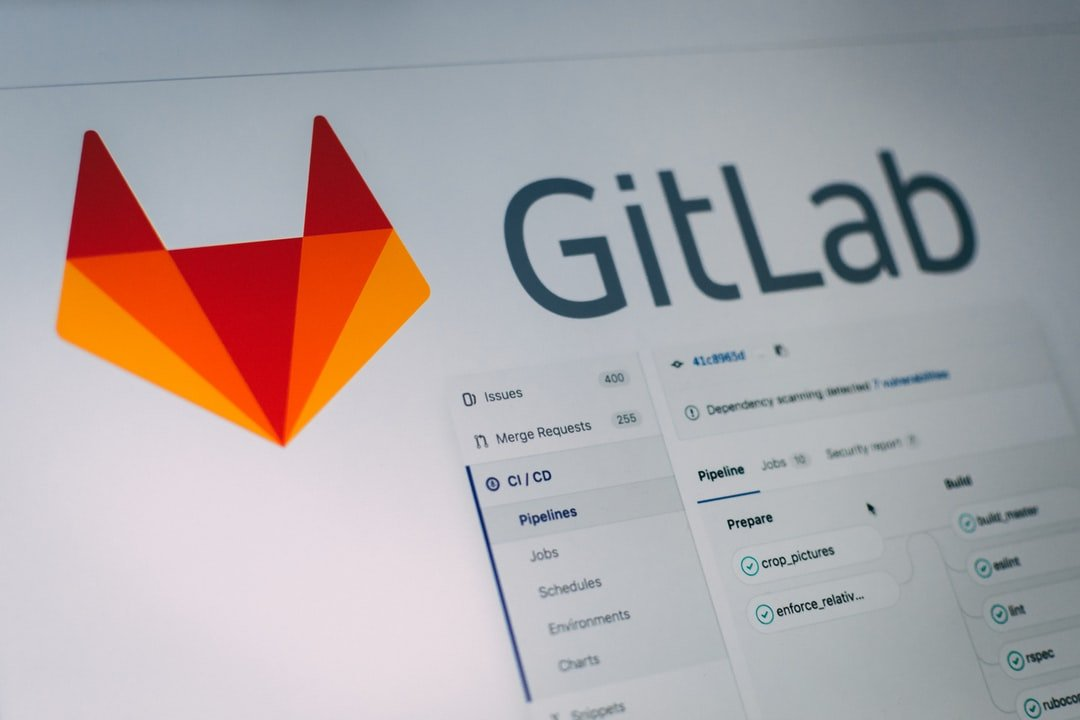 When we started with Kubernetes, around June 2018, the most popular choice on AWS was kops. But later down the road we migrated to the managed solution provided by AWS: EKS. I think it happened around the time when AWS announced PCI and ISO compliance and it also helped that meanwhile the managed platform was becoming available in more and more regions (because in the summer of 2018 you could use it only in very few locations).
When we started with Kubernetes, around June 2018, the most popular choice on AWS was kops. But later down the road we migrated to the managed solution provided by AWS: EKS. I think it happened around the time when AWS announced PCI and ISO compliance and it also helped that meanwhile the managed platform was becoming available in more and more regions (because in the summer of 2018 you could use it only in very few locations).
27. What should Automated Testing Look like for Kubernetes Apps?
 Microservices exponentially increase the number of connections and remote work is the norm - how do we ensure tightly integrated components play well together?
Microservices exponentially increase the number of connections and remote work is the norm - how do we ensure tightly integrated components play well together?
28. An Intro to Continuous Profiling in Kubernetes via Pyroscope
 Let's look into continuous profiling in K8s clusters & dive deep into how you can monitor CPU usage with Pyroscope to identify performance bottlenecks
Let's look into continuous profiling in K8s clusters & dive deep into how you can monitor CPU usage with Pyroscope to identify performance bottlenecks
29. Why Every API Needs a Clock
 Limiting flow was fundamental to TCPs success, why is it any different for APIs?
Limiting flow was fundamental to TCPs success, why is it any different for APIs?
30. Connecting Dots: Go, Docker and k8s [Part 1]
 In this post my plan is to create open tcp port scanning tool, use GO and worker pool to make it very fast. Expose it via REST resource, containerise and deploy
In this post my plan is to create open tcp port scanning tool, use GO and worker pool to make it very fast. Expose it via REST resource, containerise and deploy
31. How to Use In-Cluster Communication to Secure Kubernetes
 Cloud-native applications require a different architectural approach.
Cloud-native applications require a different architectural approach.
32. Start at Zero Cost and Scale as Customers Grow: An Overview of Platform9 Managed Kubernetes Plans
 Since we launched our enterprise Platform9 Managed Kubernetes (PMK) three years ago, we learned a lot about real-world Kubernetes deployments. Large enterprise customers like Juniper have battle-tested our enterprise PMK product at scale running on hundreds of bare metal nodes across data centers. Many customers have benefited from our SaaS management capabilities, including automated deployments, upgrades, security patching, and SLA management.
Since we launched our enterprise Platform9 Managed Kubernetes (PMK) three years ago, we learned a lot about real-world Kubernetes deployments. Large enterprise customers like Juniper have battle-tested our enterprise PMK product at scale running on hundreds of bare metal nodes across data centers. Many customers have benefited from our SaaS management capabilities, including automated deployments, upgrades, security patching, and SLA management.
[33. How Did Kubernetes Win the
Container Orchestration War?](https://hackernoon.com/how-did-kubernetes-win-the-container-orchestration-war-lp1l3x01)
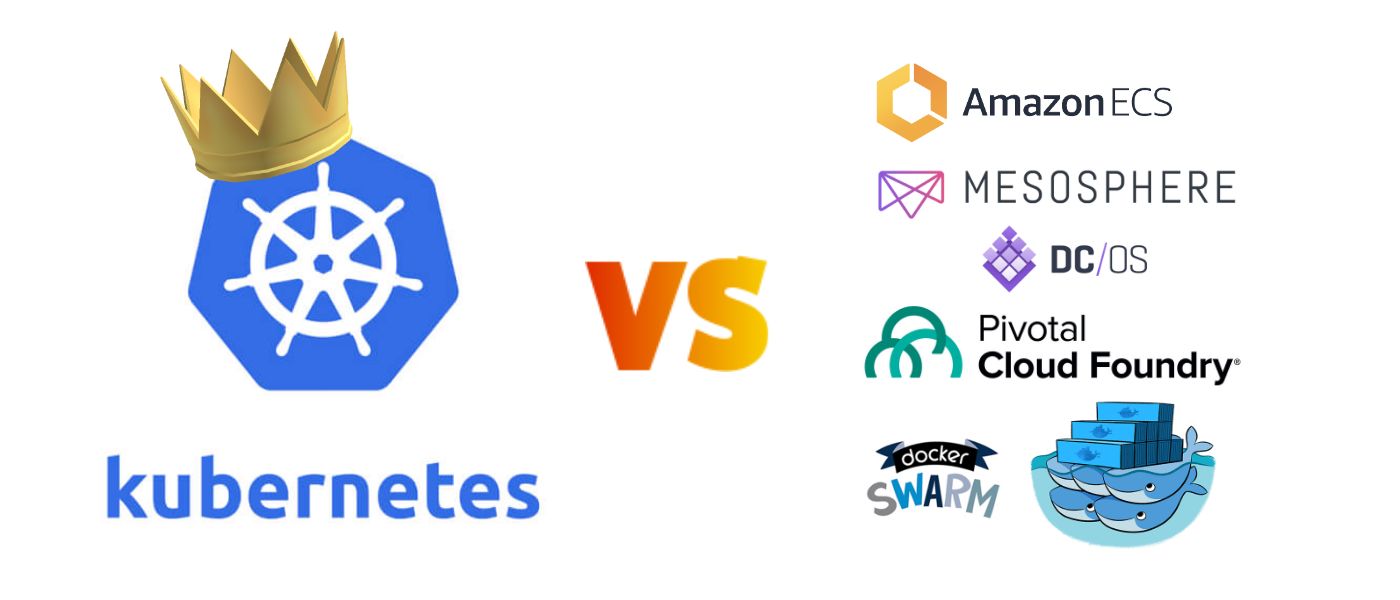 Kubernetes is now almost synonymous with container orchestration. A CNCF survey found that it is used in production by 78% of respondents. But it wasn't always like this. There used to be several big players in the field and there was talk in the industry of 'container orchestration wars.'
Kubernetes is now almost synonymous with container orchestration. A CNCF survey found that it is used in production by 78% of respondents. But it wasn't always like this. There used to be several big players in the field and there was talk in the industry of 'container orchestration wars.'
34. Using Spinnaker with Kubernetes for CI/CD
 Kubernetes is now the de-facto standard for container orchestration. With more and more organizations adopting Kubernetes, it is essential that we get our fundamental ops-infra in place before any migration. This post will focus on pushing out new releases of the application to our Kubernetes cluster i.e. Continuous Delivery.
Kubernetes is now the de-facto standard for container orchestration. With more and more organizations adopting Kubernetes, it is essential that we get our fundamental ops-infra in place before any migration. This post will focus on pushing out new releases of the application to our Kubernetes cluster i.e. Continuous Delivery.
35. CAST AI vs. Spot.io: Two Approaches to Automated Cloud Cost Optimization
 Explore two automation solutions that use automation to optimize cloud costs: CAST AI vs Spot.io and see which one is a better pick for you.
Explore two automation solutions that use automation to optimize cloud costs: CAST AI vs Spot.io and see which one is a better pick for you.
36. Level Triggering and Reconciliation in Kubernetes
 How Kubernetes manages your cluster with systems programming concepts
How Kubernetes manages your cluster with systems programming concepts
37. How to Pass the Certified Kubernetes Administrator Exam in 7 Days
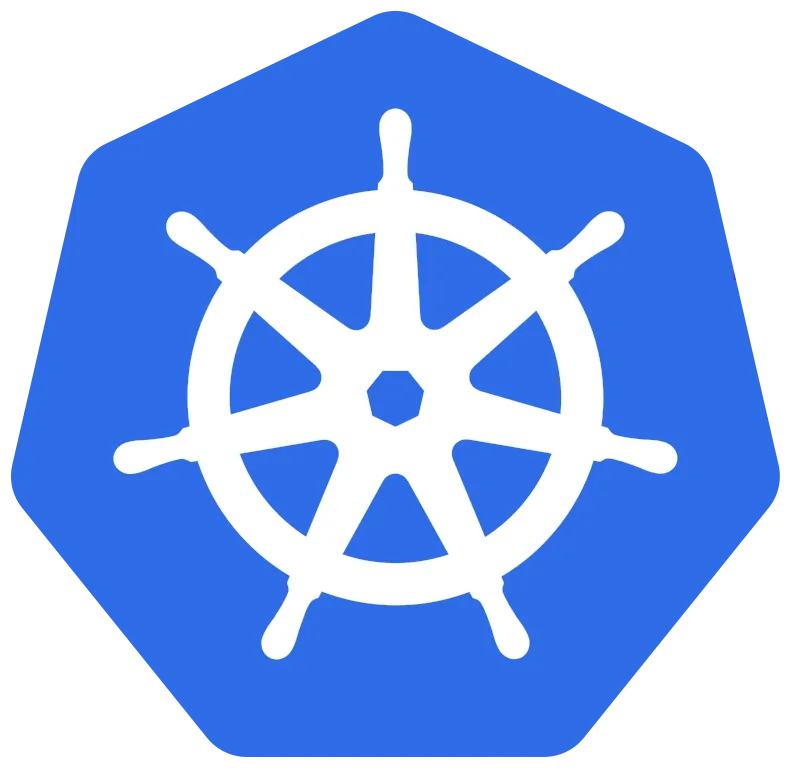 A couple of weeks ago I passed the Certified Kubernetes Administrator (CKA) exam with 7 days of prep. Here’s how I did it.
A couple of weeks ago I passed the Certified Kubernetes Administrator (CKA) exam with 7 days of prep. Here’s how I did it.
38. Creating GitOps Workflow with ArgoCD, Kustomize and GitHub Actions
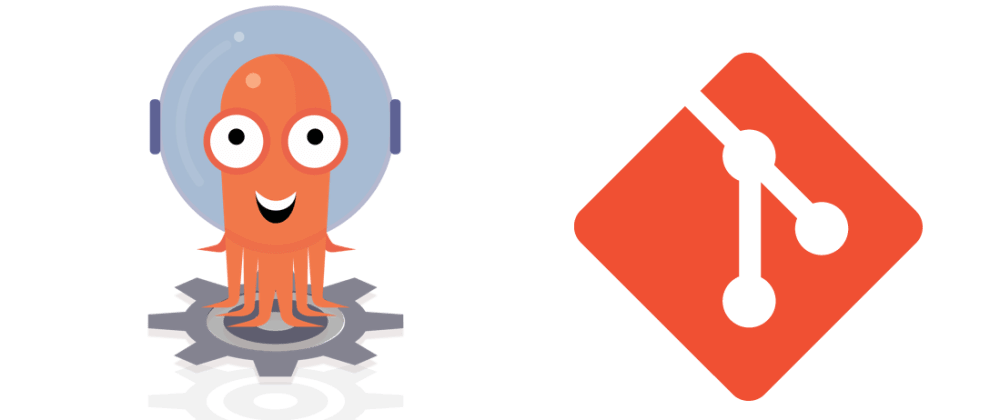 The term GitOps was first coined by Weaveworks in a popular article from August 2017. The problem it intends to solve was how to efficiently and safely deploy a Kubernetes application.
The term GitOps was first coined by Weaveworks in a popular article from August 2017. The problem it intends to solve was how to efficiently and safely deploy a Kubernetes application.
39. How To Install Kubernetes on CentOS7
 This tutorial is for the ones who want to try out the Kubernetes installation on CentOS.
This tutorial is for the ones who want to try out the Kubernetes installation on CentOS.
40. Debugging Go Applications Inside Kubernetes From IDE
 When your application only works with api expose by kubernetes, you can simply launch your application from IDE in debug mode and debug your application. But when your application needs to connect to other services or components which are only available inside the Kubernetes cluster then this solution will not work.
When your application only works with api expose by kubernetes, you can simply launch your application from IDE in debug mode and debug your application. But when your application needs to connect to other services or components which are only available inside the Kubernetes cluster then this solution will not work.
41. [Deep Dive] Docker, Kubernetes, and Microservices for Small Teams
 Most of the web apps I build eventually end up needing a background worker. There will be some slow or heavy task that really should run independently, like an integration with a third-party server, a web scraper, PDF creation, something.
Most of the web apps I build eventually end up needing a background worker. There will be some slow or heavy task that really should run independently, like an integration with a third-party server, a web scraper, PDF creation, something.
42. How To Run Docker Linux Containers Natively on Windows
 With Docker Desktop running on WSL 2, users can leverage Linux workspaces and avoid having to maintain both Linux and Windows build scripts.
With Docker Desktop running on WSL 2, users can leverage Linux workspaces and avoid having to maintain both Linux and Windows build scripts.
How is it different?
43. How to create Kubernetes YAML files
 This article is intended as a guide for creating Kubernetes manifest files.
This article is intended as a guide for creating Kubernetes manifest files.
44. How to Choose a Kubernetes Container Registry Solution
 Organizations that want to scale their container initiatives require a private container registry that meets enterprise standards. Here is what to look for.
Organizations that want to scale their container initiatives require a private container registry that meets enterprise standards. Here is what to look for.
45. An Essential Guide to Kubernetes Observability Challenges with Pixie
 Debugging on K8s is hard
The main reason that makes Kubernetes observability so difficult is the volatile and dynamic nature of workloads and resources.
Debugging on K8s is hard
The main reason that makes Kubernetes observability so difficult is the volatile and dynamic nature of workloads and resources.
46. 21 Resources and Tutorials to Learn Kubernetes
 In this blog post below, we have compiled a list of 21 resources and tutorials, that are helpful to start your Kubernetes learning journey.
In this blog post below, we have compiled a list of 21 resources and tutorials, that are helpful to start your Kubernetes learning journey.
47. Container Security Tools to Try in 2023
 7 Strategies and associated tools for your container security workflows.
7 Strategies and associated tools for your container security workflows.
48. 10 Best Practices from the Industry and Community in Kubernetes Security
 One of the best ways to tighten your Kubernetes security is by implementing ten tactics that have become industry-standard.
One of the best ways to tighten your Kubernetes security is by implementing ten tactics that have become industry-standard.
49. Avoid these 4 Kubernetes Anti-Patterns
 An anti-pattern is a high-risk solution to a problem that’s usually ineffective. At first glance, these types of solutions appear appropriate and effective.
An anti-pattern is a high-risk solution to a problem that’s usually ineffective. At first glance, these types of solutions appear appropriate and effective.
50. 5 Best Technologies You Can Use to Deploy and Manage a Microservices Architecture
 Check out the latest platforms and tools to deploy and manage Microservices here! Take a look!
Check out the latest platforms and tools to deploy and manage Microservices here! Take a look!
51. Kubernetes and Helm: A Deadly Combo to Help You Deploy with Ease
 If Kubernetes is the pilot that steers the ship, then Helm Charts are the navigational maps that guide the journey correctly. We have seen this happening over the years in the world of software development, one tool comes with an idea, serves the purpose, and becomes obsolete in some years, and then one more tool gets introduced that replaces the old approach, and this journey continues. Similarly, today is the era where Kubernetes is looked upon as the king of container orchestration. Backed by Google, Kubernetes has grown leaps and bounds by increasing its reach and community to every part of the world.
If Kubernetes is the pilot that steers the ship, then Helm Charts are the navigational maps that guide the journey correctly. We have seen this happening over the years in the world of software development, one tool comes with an idea, serves the purpose, and becomes obsolete in some years, and then one more tool gets introduced that replaces the old approach, and this journey continues. Similarly, today is the era where Kubernetes is looked upon as the king of container orchestration. Backed by Google, Kubernetes has grown leaps and bounds by increasing its reach and community to every part of the world.
52. My Prometheus is Overwhelmed! Help!
 Your prometheus monitoring setup is grinding to a halt? You've thrown too much data at it? Don't worry, there's ways to fix this.
Your prometheus monitoring setup is grinding to a halt? You've thrown too much data at it? Don't worry, there's ways to fix this.
53. We Moved 250 Microservices to Kubernetes With No Downtime
 How to move spring boot microservices cluster to kubernetes
How to move spring boot microservices cluster to kubernetes
54. Checklist for Upgrading an EKS Kubernetes Cluster without Downtime
 A helpful checklist for upgrading Amazon EKS.
A helpful checklist for upgrading Amazon EKS.
55. 10 DevOps Conferences You Should Be Attending in 2020
 DevOps being the center stage of the software development life cycle today, has gained enough momentum and has a massive community around the world.
DevOps being the center stage of the software development life cycle today, has gained enough momentum and has a massive community around the world.
56. GitHub Pages is a Great Way to Host a Server
 Hosting serverless applications outside of cloud on a home server.
Hosting serverless applications outside of cloud on a home server.
57. When You Can't Rely on the Prometheus Up Metric
 Don't rely on the up metric if your prometheus is scraping metrics directly from the pods. Build your own custom metric. Check this out to understand why.
Don't rely on the up metric if your prometheus is scraping metrics directly from the pods. Build your own custom metric. Check this out to understand why.
58. How to Automate Kubernetes Deployments with Postman
 Kubernetes is the most widely used container-based orchestration platform today. Learn how to deploy apps with continuous delivery using Postman.
Kubernetes is the most widely used container-based orchestration platform today. Learn how to deploy apps with continuous delivery using Postman.
59. How to Handle Kubernetes Secrets with ArgoCD and Sops
 In this article, we will look into common ways to secure secrets in a Kubernetes application and how to manage them in a GitOps workflow based on ArgoCD with the help of Sops.
In this article, we will look into common ways to secure secrets in a Kubernetes application and how to manage them in a GitOps workflow based on ArgoCD with the help of Sops.
60. Introduction to Containers, Microservices on Kubernetes
 Containers and Microservices have become the most popular way for new software deployments, and for application re-factoring, such as twelve factor apps.
Containers and Microservices have become the most popular way for new software deployments, and for application re-factoring, such as twelve factor apps.
61. Face the Facts: There is no Kubectl Restart Pod Command. Here's What You Can Try Instead
 Many Kubernetes operators search for a command like “kubectl restart pod." Sadly, there is no such command in Kubernetes. But workarounds exist.
Many Kubernetes operators search for a command like “kubectl restart pod." Sadly, there is no such command in Kubernetes. But workarounds exist.
62. How to Optimize Kubernetes and Argo Workflow Spending
 Kubernetes costs can soar if you don't pay attention. Here's an open source way to monitor Kubernetes costs for devs using Argo Workflow.
Kubernetes costs can soar if you don't pay attention. Here's an open source way to monitor Kubernetes costs for devs using Argo Workflow.
63. Using the Kubernetes Controller for Envoy
 Creating Kubernetes controller for Envoyproxy with xDS protocol and Custom Resource Definition
Creating Kubernetes controller for Envoyproxy with xDS protocol and Custom Resource Definition
64. Exploring Containerization Beyond Kubernetes
 Here's why cloud-based PaaS and Containers make a solid combination for most developers.
Here's why cloud-based PaaS and Containers make a solid combination for most developers.
65. Should You Learn Kubernetes in 2022
 With the increasing popularity of containerized applications, the container orchestration platform Kubernetes has become a must in the toolset of a developer.
With the increasing popularity of containerized applications, the container orchestration platform Kubernetes has become a must in the toolset of a developer.
66. Tail logs from multiple Kubernetes pods the simple way
 Kubernetes (a.k.a K8s) is the de-facto standard of container orchestration software backed by Google and one of the most active open source projects. If you are using Docker it is very likely that you are using Kubernetes or at least have heard about it.
Kubernetes (a.k.a K8s) is the de-facto standard of container orchestration software backed by Google and one of the most active open source projects. If you are using Docker it is very likely that you are using Kubernetes or at least have heard about it.
67. 9 Best DevOps Practices for a successful DevOps Journey
 The success of DevOps lies in the right way of implementation. Here, are some best DevOps practices for successful DevOps transformation in 2022 and beyond.
The success of DevOps lies in the right way of implementation. Here, are some best DevOps practices for successful DevOps transformation in 2022 and beyond.
68. What Does "Building a Cloud-Native Application" Really Mean?
 The inexplicable popularity of the term "cloud-native" is without real meaning.
"Cloud-Native Apps" is an overused (even abused) term in the tech industry.
The inexplicable popularity of the term "cloud-native" is without real meaning.
"Cloud-Native Apps" is an overused (even abused) term in the tech industry.
69. The Essential Guide to Pod Eviction On Kubernetes
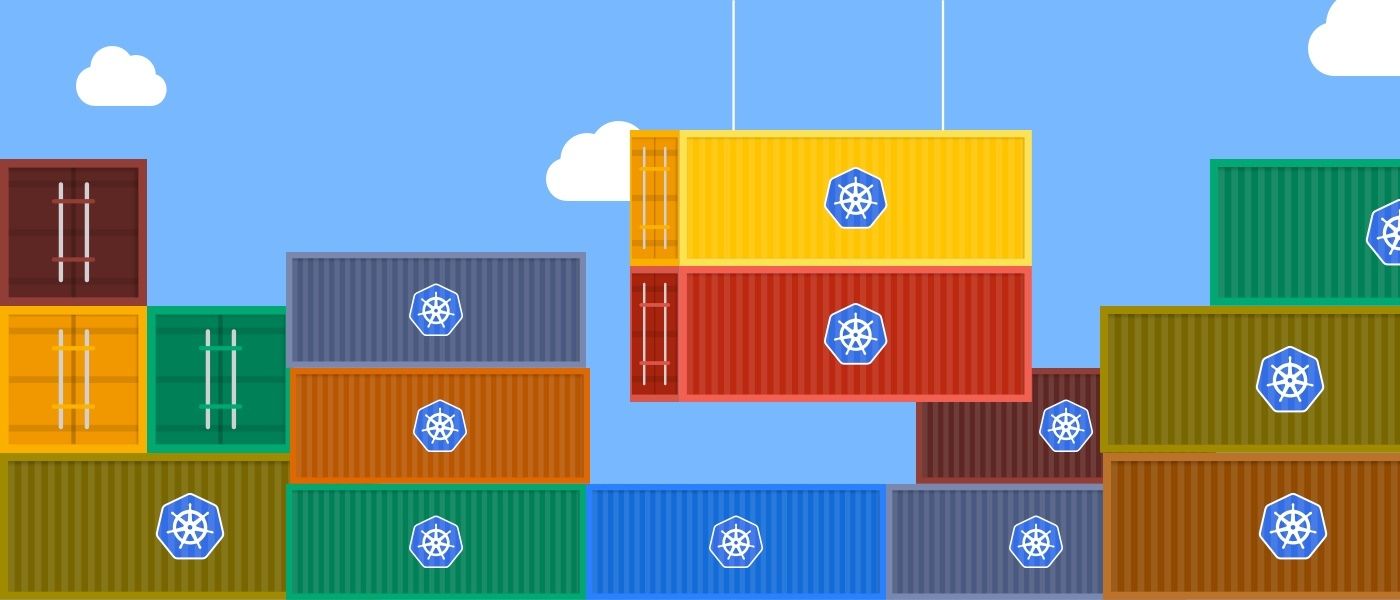 By nature, pods in Kubernetes clusters are ephemeral. They can be created, killed, and moved around by the scheduler. This may occasionally cause disruption in the microservices if pods are not configured properly.
By nature, pods in Kubernetes clusters are ephemeral. They can be created, killed, and moved around by the scheduler. This may occasionally cause disruption in the microservices if pods are not configured properly.
70. Building a Small K8s Cluster on a Single PC - Chapter 1 - A Host is Rising.
 First article in a series for introducing a guide about building a K8s cluster on a single PC with Proxmox VE and K3s
First article in a series for introducing a guide about building a K8s cluster on a single PC with Proxmox VE and K3s
71. The 5 Best Kubernetes Alternatives
 Kubernetes is not the only player in the market, there are different Kubernetes competitors and Kubernetes alternatives.
Kubernetes is not the only player in the market, there are different Kubernetes competitors and Kubernetes alternatives.
72. Amazon Elastic Kubernetes Service (EKS) vs. Azure Kubernetes Service (AKS), A Comparison
 Managed Kubernetes is experiencing massive growth in adoption and many organizations are moving their self-managed Kubernetes clusters.
Managed Kubernetes is experiencing massive growth in adoption and many organizations are moving their self-managed Kubernetes clusters.
73. Testkube: K8s Native Testing Tool
 More background information on the Cloud Native Testing Tool, Testkube.
More background information on the Cloud Native Testing Tool, Testkube.
74. Installing Configurator Using Helm Charts: Version Controls for Kubernetes ConfigMaps
 This is how to make use of Helm Charts with Configurator, a versioning & sync service for Kubernetes ConfigMaps that can make it easier to use ConfigMaps.
This is how to make use of Helm Charts with Configurator, a versioning & sync service for Kubernetes ConfigMaps that can make it easier to use ConfigMaps.
75. Kubernetes Clusters: Intelligently Adapt To Use Spot Nodes
 Kubecost's Spot Commander recommends optimal cluster configurations, letting Kubernetes users take advantage of spot node savings to streamline your processes.
Kubecost's Spot Commander recommends optimal cluster configurations, letting Kubernetes users take advantage of spot node savings to streamline your processes.
76. Improve Kubernetes Network Security with Cilium
 This article will show how to, using Cilium, tackle the authorization concern and move to push it to the underlying platform from the application code.
This article will show how to, using Cilium, tackle the authorization concern and move to push it to the underlying platform from the application code.
77. DevOps Vs. SRE: Similarities, Differences, and Challenges
 With the global tech giants like Google, Amazon, and Netflix pioneering the adoption of DevOps and SRE, their ROI has grown in leaps and bounds.
With the global tech giants like Google, Amazon, and Netflix pioneering the adoption of DevOps and SRE, their ROI has grown in leaps and bounds.
78. Kubernetes New High Severity Vulnerability CVE-2021-25741 – Are You Exposed?
 An overview of the Kubernetes Vulnerability and how to protect yourself from any potential harm.
An overview of the Kubernetes Vulnerability and how to protect yourself from any potential harm.
79. Microsoft's DAPR (Distributed Application Runtime): An Overview
 Discover the powerful capabilities of Dapr by implementing a sample application with microservices leveraging the actor model to foster its strengths.
Discover the powerful capabilities of Dapr by implementing a sample application with microservices leveraging the actor model to foster its strengths.
80. 10+ Best Resources to learn DevOps in Depth [Online Courses]

81. Kubernetes Tutorial: Merge all the Kubeconfigs! [Part 7]
 Once you start managing more than one Kubernetes cluster, you'll start to demand more from your $KUBECONFIG.
Once you start managing more than one Kubernetes cluster, you'll start to demand more from your $KUBECONFIG.
82. The Importance of Application Containerization
 Understand how containerized applications can drive efficient business results.
Understand how containerized applications can drive efficient business results.
83. GitOps Tutorial: How to Provision an EC2 Instance with Crossplane and Flux
 In this article, we are going to learn how to automate the provisioning of cloud resources via Crossplane and combine it with GitOps practices.
In this article, we are going to learn how to automate the provisioning of cloud resources via Crossplane and combine it with GitOps practices.
You will most b
84. Distroless Containers: Hype or True Value?
 The goal
The goal
85. Kubernetes Tutorial: Using The System For Personal Projects
 Learn how to deploy a simple rest API with ExpressJS and expose it using a service and ingress. Great for Kubernetes personal projects.
Learn how to deploy a simple rest API with ExpressJS and expose it using a service and ingress. Great for Kubernetes personal projects.
86. Are Kubernetes StatefulSets Broken?
 Kubernetes StatefulSets are broken
Kubernetes StatefulSets are broken
87. Why Wink Adopted a Cloud-Native Infrastructure Backed by Kubernetes-Docker-CoreOS Container Linux
 This blog covers why Wink adopted a Cloud-Native Infrastructure Backed by Kubernetes-Docker-CoreOS Container Linux stack. Learn more.
This blog covers why Wink adopted a Cloud-Native Infrastructure Backed by Kubernetes-Docker-CoreOS Container Linux stack. Learn more.
88. The State of Containers in 2020
 Containerization has come a long way and containers have completely revolutionized the way companies build, test, package and deliver software today. Containers are good for packaging any software. Big or small. Microservices are great candidates to be packaged and delivered with container images. With Microservices architecture, the large monolith is decoupled into several mini services that work independently.
Containerization has come a long way and containers have completely revolutionized the way companies build, test, package and deliver software today. Containers are good for packaging any software. Big or small. Microservices are great candidates to be packaged and delivered with container images. With Microservices architecture, the large monolith is decoupled into several mini services that work independently.
89. GitHub Actions: How To Deploy To Google Kubernetes Engine
 GitHub actions and workflows are great. We use them to deploy a web app to different cluster environments and I want to show you how we did it. Hopefully, this helps to simplify your deployment process as well. I’ve also written a companion article that describes our GitHub workflows for continuous integration.
GitHub actions and workflows are great. We use them to deploy a web app to different cluster environments and I want to show you how we did it. Hopefully, this helps to simplify your deployment process as well. I’ve also written a companion article that describes our GitHub workflows for continuous integration.
90. Tips and Tricks to Pass Certified Kubernetes Application (CKA) Exam
 Certified Kubernetes Administrator: What you need to know to pass the CKA exam? Useful tips to pass the Certified Kubernetes Administrator exam.
Certified Kubernetes Administrator: What you need to know to pass the CKA exam? Useful tips to pass the Certified Kubernetes Administrator exam.
91. Platforms on k8s with Golang - Watch any CRD
 Let’s say you want to do more with Kubernetes than run off-the-shelf apps. Perhaps you want to stitch apps together into a bespoke platform. Imagine that when your user clicks a button you want to provision a new database or open up a new public-facing endpoint.
Let’s say you want to do more with Kubernetes than run off-the-shelf apps. Perhaps you want to stitch apps together into a bespoke platform. Imagine that when your user clicks a button you want to provision a new database or open up a new public-facing endpoint.
92. Goodbye, Cost-depth Trade Off: Cloud-Native Observability, Redefined
 It turns out that, by rethinking the fundamentals of your approach to monitoring, you can have it all
It turns out that, by rethinking the fundamentals of your approach to monitoring, you can have it all
93. Data Services for the Masses
 I’ve held several roles in my career in IT, ranging from software developer to enterprise architect to developer advocate. I’ve always been fascinated by the role that data plays in our applications—putting it into databases, getting it back out quickly, making sure it remains accurate when transferred between systems. Many of the hardest problems I’ve encountered have centered around data. For example:
I’ve held several roles in my career in IT, ranging from software developer to enterprise architect to developer advocate. I’ve always been fascinated by the role that data plays in our applications—putting it into databases, getting it back out quickly, making sure it remains accurate when transferred between systems. Many of the hardest problems I’ve encountered have centered around data. For example:
94. Kubernetes Secrets and ConfigMaps
 In this article we will discuss about the applications of Kubernetes ConfigMaps and Secrets.
In this article we will discuss about the applications of Kubernetes ConfigMaps and Secrets.
95. Understanding Pods in Kubernetes
 Pods are Kubernetes Objects that are the basic unit for running our containers inside our Kubernetes cluster.
Pods are Kubernetes Objects that are the basic unit for running our containers inside our Kubernetes cluster.
96. How to Accelerate Auto Data Tagging for Autonomous Driving in Hybrid Cloud
 This blog shares the practice of using Alluxio and Spark to accelerate the auto data tagging system in WeRide, an autonomous driving technology company.
This blog shares the practice of using Alluxio and Spark to accelerate the auto data tagging system in WeRide, an autonomous driving technology company.
97. Helm — Everything You Need to Know Part II
 In this tutorial, we are going to learn about Helm versions (v2 vs. v3), and a practical example of how to use it.
In this tutorial, we are going to learn about Helm versions (v2 vs. v3), and a practical example of how to use it.
98. Kubernetes Explained Simply: Data Extraction With JSON Path [Part 8]
 kubectl can pull a lot of data about our deployments and pod. Most of the time, we humans are the recipients of that information, and kubectl obliges by nicely formatting things in pretty tables.
kubectl can pull a lot of data about our deployments and pod. Most of the time, we humans are the recipients of that information, and kubectl obliges by nicely formatting things in pretty tables.
99. Google Anthos Vs. Cast.AI: A Review
 The idea that you can build an app in one place and then deploy it across multiple clouds is an enticing one.
The idea that you can build an app in one place and then deploy it across multiple clouds is an enticing one.
100. My Journey to Achieving DevOps Bliss, Without Useless AWS certifications
 The story of how I transformed from a naive full-stack engineer struggling with AWS and PaaS providers to loving my life and achieving DevOps bliss.
The story of how I transformed from a naive full-stack engineer struggling with AWS and PaaS providers to loving my life and achieving DevOps bliss.
101. Breaking Down What is New in Kubernetes 1.19
 The new Kubernetes 1.19 comes with 34 enhancements. Out of these, 10 have progressed to stable, 15 are in the beta stage, and 9 are in the alpha.
The new Kubernetes 1.19 comes with 34 enhancements. Out of these, 10 have progressed to stable, 15 are in the beta stage, and 9 are in the alpha.
102. GitOps. GitOps? What is GitOps?
 In this blog we will try to answer all your pressing questions about GitOps and find out how it can help you in the software delivery process.
In this blog we will try to answer all your pressing questions about GitOps and find out how it can help you in the software delivery process.
103. Web Application Development: Principles of Development Based on Microservices. Part 2.
 To use a microservice architecture, the developer needs to study special technologies that are applicable for such web app development.
To use a microservice architecture, the developer needs to study special technologies that are applicable for such web app development.
104. The Ultimate Beginners Guide To Kubernetes and Container Orchestration
 Kubernetes (AKA K8s) is a platform implementing orchestration of containers in a cluster environment. In this article, we review Kubernetes & Containers.
Kubernetes (AKA K8s) is a platform implementing orchestration of containers in a cluster environment. In this article, we review Kubernetes & Containers.
105. linking kubernetes clusters to vpcs on aws
 What is the best way to connect Kubernetes clusters running across multiple AWS VPCS?
What is the best way to connect Kubernetes clusters running across multiple AWS VPCS?
106. How to Use Kong Ingress Controller with Spring Boot Services
 Kong Ingress Controller allows users to include the power of Kong Gateway in existing Kubernetes implementations, all without much effort.
Kong Ingress Controller allows users to include the power of Kong Gateway in existing Kubernetes implementations, all without much effort.
107. Monitoring Kubernetes Components using Prometheus
 Monitoring is a crucial aspect of any Ops pipeline and for technologies like Kubernetes which is a rage right now, a robust monitoring setup can bolster your confidence to migrate production workloads from VMs to Containers.
Monitoring is a crucial aspect of any Ops pipeline and for technologies like Kubernetes which is a rage right now, a robust monitoring setup can bolster your confidence to migrate production workloads from VMs to Containers.
108. The Kubernetes Namespaces You Should Never Touch
 Kubernetes default namespaces and their importance
Kubernetes default namespaces and their importance
109. Why you Should Get Started Building Containers on Kubernetes
 Kubernetes is ideal for container orchestration. Because of its features, it also comes with complexity. In this article, we will discuss when to use Kubernetes
Kubernetes is ideal for container orchestration. Because of its features, it also comes with complexity. In this article, we will discuss when to use Kubernetes
110. Deploy React Application to Kubernetes Cluster on Google Cloud Platform
 Congratulations to all who made it this far in the ALCwithGoogle
program.
Congratulations to all who made it this far in the ALCwithGoogle
program.
111. A Tale of Two (Docker Multi-Stage Build) Layers

112. Top 5 Kubernetes Coding Errors and How to Solve Them
 How to solve the top 5 Kubernettes coding errors.
How to solve the top 5 Kubernettes coding errors.
113. Increasing Developer Productivity with skaffold
 Primary focus of Developer is to write code. Build, Test and Deploy of the application are better left to be managed by tools. skaffold can help in automating some of mundane tasks that comes with using kubernetes.
Primary focus of Developer is to write code. Build, Test and Deploy of the application are better left to be managed by tools. skaffold can help in automating some of mundane tasks that comes with using kubernetes.
114. 2 Methods for Installing Serverless Kubernetes in Alibaba Cloud
 Exploring Alibaba Cloud Serverless Kubernetes capabilities. Here are two methods for deploying Serverless Kubernetes in Alibaba Cloud.
Exploring Alibaba Cloud Serverless Kubernetes capabilities. Here are two methods for deploying Serverless Kubernetes in Alibaba Cloud.
115. How To Use Prometheus Adapter to Autoscale Custom Metrics Deployments
 Introduction
Introduction
116. What Does Peeling An Egg Have To Do With DevOps?
 Learn These Guiding Principles To Help You Level-Up Your DevOps Chops
Learn These Guiding Principles To Help You Level-Up Your DevOps Chops
117. Applying Angular Runtime Configurations in Dockerized Environments

118. How to Protect Kubernetes Clusters from Cyberthreats
 Uncovering the importance of the role of authentication and user control provided by Kubernetes to bolster the best security practices
Uncovering the importance of the role of authentication and user control provided by Kubernetes to bolster the best security practices
119. What Is a Container And How To Use It
 Welcome to this tutorial series, where we will evolve from the anatomy of a container inside the Linux Kernel, and will keep building pieces and evolving till the publication of a service into an Orchestration Platform. The general idea is to detail as much as possible (without being massive) how is things working under the hood.
Welcome to this tutorial series, where we will evolve from the anatomy of a container inside the Linux Kernel, and will keep building pieces and evolving till the publication of a service into an Orchestration Platform. The general idea is to detail as much as possible (without being massive) how is things working under the hood.
[120. Getting Started with GitOps 2.0
Using ArgoCD & Codefresh](https://hackernoon.com/getting-started-with-gitops-20-using-argocd-and-codefresh-9cs3zl1)
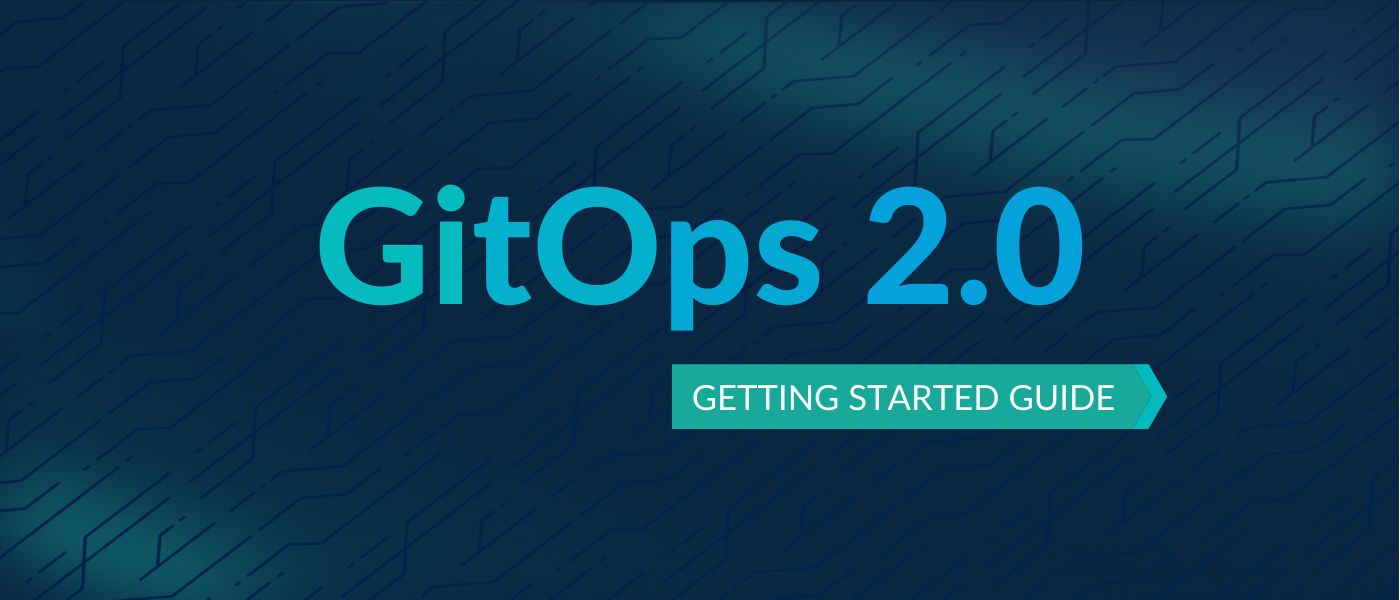 GitOps is the practice of deploying applications by using Git Operations only (and not clicking UI buttons). The paradigm already existed in one form or another but was officially named as “GitOps” in 2017 by Weaveworks and has since become very popular for Kubernetes deployments.
GitOps is the practice of deploying applications by using Git Operations only (and not clicking UI buttons). The paradigm already existed in one form or another but was officially named as “GitOps” in 2017 by Weaveworks and has since become very popular for Kubernetes deployments.
121. Why GitOps is so exciting?
 Initially, we have seen DevOps, DevSecOps and many other ops but nowadays a new terminology “GitOps” is getting famous. Its fame has reached to this level that it was a trending topic at KubeCon.
Initially, we have seen DevOps, DevSecOps and many other ops but nowadays a new terminology “GitOps” is getting famous. Its fame has reached to this level that it was a trending topic at KubeCon.
122. Kubernetes vs Docker: Differences Explained
 Learn about Docker and Kubernetes container solutions, and discover the differences between Kubernetes and Docker to choose the one that best suits your needs.
Learn about Docker and Kubernetes container solutions, and discover the differences between Kubernetes and Docker to choose the one that best suits your needs.
123. About Ten Open Source Technologies That Are Changing the World
 At the beginning of the year, when I started building Archbee, I evaluated some cool tech out there. Here’s the list of tech I think will change the world in ways we can’t even predict.
At the beginning of the year, when I started building Archbee, I evaluated some cool tech out there. Here’s the list of tech I think will change the world in ways we can’t even predict.
124. Kubernetes Explained Simply: Cleaning Up After Yourself [Part 10]
 If there's one thing that Kubernetes makes easy, it's creating resources – pods, deployments, volumes – before long you'll have tons of them lying around.
If there's one thing that Kubernetes makes easy, it's creating resources – pods, deployments, volumes – before long you'll have tons of them lying around.
125. The AWS Outage Downed Slack, Zoom, and Notion, Among Others. A Multi-Cloud Approach Could've Helped
 Amazon Web Services (AWS) had a second in a row-major outage a few days ago. Most likely Slack, Zoom and Notion were affected by this.
Amazon Web Services (AWS) had a second in a row-major outage a few days ago. Most likely Slack, Zoom and Notion were affected by this.
126. Introducing NodePort Service in Kubernetes
 Summary
Summary
127. Exporting Your GKE Cluster to Terraform Cloud: A Guide with Challenges and Solutions
 In this article, I'll share our journey at ANNA Money from using our Kubernetes installation in GCP to the managed Kubernetes service by Google and GKE.
In this article, I'll share our journey at ANNA Money from using our Kubernetes installation in GCP to the managed Kubernetes service by Google and GKE.
128. Kubernetes Security For Developers: A Quick Start Guide
 One of the basics of running Kubernetes in a production environment is security—how to ensure container images, pods, specific microservices, are protected.
One of the basics of running Kubernetes in a production environment is security—how to ensure container images, pods, specific microservices, are protected.
129. Kubernetes Explained Simply: #3 What Do I Have Permissions For?
 Stretching as far back as version 1.8 (in September of 2017), Kubernetes has supported a fine-grained access control mechanism called RBAC. Nothing gets done via the Kubernetes API that isn't governed by some sort permission or another, and there are a lot of them.
Stretching as far back as version 1.8 (in September of 2017), Kubernetes has supported a fine-grained access control mechanism called RBAC. Nothing gets done via the Kubernetes API that isn't governed by some sort permission or another, and there are a lot of them.
130. Two Key Points of Containerisation You Need to Know by Heart
 What is containerisation and what’s so great about it anyway? You may work with container-based applications every day at work, but there comes a time when an intern or a fresh graduate new joiner (or perhaps a non-IT colleague) in your team ask you these questions and you find yourself stopped in your track thinking: “where should I start?”.
What is containerisation and what’s so great about it anyway? You may work with container-based applications every day at work, but there comes a time when an intern or a fresh graduate new joiner (or perhaps a non-IT colleague) in your team ask you these questions and you find yourself stopped in your track thinking: “where should I start?”.
131. The #1 Reason Jenkins Fails
 Jenkins down? Pipelines broken? Hackers making off with your data? It often stems from one fatal flaw. While Jenkins has been both loved and hated for being DevOps duct tape, every user knows there are plenty of issues to deal with. Over the past three years, as part of my work at Codefresh I’ve been helping teams migrate from Jenkins and I’ve seen all of these issues over and over again. The biggest issue may surprise you because it creates a cascade effect.
Jenkins down? Pipelines broken? Hackers making off with your data? It often stems from one fatal flaw. While Jenkins has been both loved and hated for being DevOps duct tape, every user knows there are plenty of issues to deal with. Over the past three years, as part of my work at Codefresh I’ve been helping teams migrate from Jenkins and I’ve seen all of these issues over and over again. The biggest issue may surprise you because it creates a cascade effect.
132. Exploring an Open Source Toolkit for Debugging Kubernetes - KoolKits
 A new open source approach for debugging live applications - right from inside your IDE or terminal window, and without stopping the live application.
A new open source approach for debugging live applications - right from inside your IDE or terminal window, and without stopping the live application.
133. "I want people to be able to access content without too many restrictions" #Noonies2021
 As someone in the tech industry, I believe that the most exciting open-source technology of the present is Kubernetes because of its general-purpose nature.
As someone in the tech industry, I believe that the most exciting open-source technology of the present is Kubernetes because of its general-purpose nature.
134. How To Create a CD pipeline with Kubernetes, Ansible, and Jenkins
 What does CI/CD try to solve?
What does CI/CD try to solve?
135. Getting started with MongoDB Enterprise Operator for Kubernetes
 Introduction
Introduction
136. Kubernetes Monitoring with Prometheus and Thanos
 Introduction
Introduction
137. Common Mistakes to Avoid When Migrating
 Licensing fees and risk are the main drivers for migrating to Open Source Cloud Foundry or Kubernetes...
Licensing fees and risk are the main drivers for migrating to Open Source Cloud Foundry or Kubernetes...
138. What We Learned By Dockerizing Our Applications
 A universal truth we’ve experienced as both an IT software vendor and as an application delivery team is that application owners are constantly trying to deliver better software faster.
A universal truth we’ve experienced as both an IT software vendor and as an application delivery team is that application owners are constantly trying to deliver better software faster.
139. Kubecost vs. CAST AI: A Perfect Match for End-to-End Cloud Cost Optimization
 A detailed comparison of cost optimization features from two modern cloud-native solutions, Kubecost vs. CAST AI for optimizing cloud costs.
A detailed comparison of cost optimization features from two modern cloud-native solutions, Kubecost vs. CAST AI for optimizing cloud costs.
140. Where is DevOps Going in 2021?
 Efficiency, speed, transparency — all of this is possible with DevOps. In 2021, AI, data security, assembly lines, and more will take over as DevOps trends.
Efficiency, speed, transparency — all of this is possible with DevOps. In 2021, AI, data security, assembly lines, and more will take over as DevOps trends.
141. Serverless Tekton Pipelines on AWS EKS Fargate
 Building an on-demand, server less Continuous Delivery automation solution using Tekton and AWS EKS Fargate
Building an on-demand, server less Continuous Delivery automation solution using Tekton and AWS EKS Fargate
142. How to Deploy Apps to a Local K3d Cluster
 In this post, we will discuss how to deploy and test an application on a local Kubernetes cluster.
In this post, we will discuss how to deploy and test an application on a local Kubernetes cluster.
143. Creating and Deploying a Simple Helm Chart
 Learn how to create a simple Helm chart to package and deploy individual Kubernetes applications.
Learn how to create a simple Helm chart to package and deploy individual Kubernetes applications.
144. Deploy a LAMP stack as a Helm Chart
 Kubernetes deployments are becoming even more complex but Helm is a good solution to bridge this deployment complexity and package Kubernetes applications
Kubernetes deployments are becoming even more complex but Helm is a good solution to bridge this deployment complexity and package Kubernetes applications
145. GitOps using Flux and Flagger
 This blog will go through the Flux and Flagger tools and how they can be used to minimize the blast radius and control the delivery.
This blog will go through the Flux and Flagger tools and how they can be used to minimize the blast radius and control the delivery.
146. A Quick Guide to Writing YAML for Kubernettes
 YAML is a human-friendly, data serialization standard. It also has various applications in Kubernetes.
YAML is a human-friendly, data serialization standard. It also has various applications in Kubernetes.
147. There Must Be a Better Way To Build on AWS
 So AWS gives startups $100k in free credits. Google and Azure have similar programs for startups. Then why isn’t every startup CTO starting on the Big Cloud?
So AWS gives startups $100k in free credits. Google and Azure have similar programs for startups. Then why isn’t every startup CTO starting on the Big Cloud?
148. Eliminate Friction in App Delivery to Kubernetes
 The last two decades have seen a sea change in the way software is written and delivered. Waterfall to iterative to agile, native to hybrid to responsive interfaces, monoliths to microservices, installed to pay-as-you-go SaaS, data centers to private and hybrid clouds, and virtual machines to containers. As the market constantly evolves, enterprises are facing a ton of choices with increasing complexity.
The last two decades have seen a sea change in the way software is written and delivered. Waterfall to iterative to agile, native to hybrid to responsive interfaces, monoliths to microservices, installed to pay-as-you-go SaaS, data centers to private and hybrid clouds, and virtual machines to containers. As the market constantly evolves, enterprises are facing a ton of choices with increasing complexity.
149. Kubernetes Could Be The One To Make the Internet of Things (IoT) Reach Its Potential
 The arrival of 5G wireless technology is often touted for the orders-of-magnitude boost in bandwidth it will bring to smartphone users and how it will make their lives wonderful, but the more immediate—and foreseeable—the impact will be on the Internet of Things (IoT).
The arrival of 5G wireless technology is often touted for the orders-of-magnitude boost in bandwidth it will bring to smartphone users and how it will make their lives wonderful, but the more immediate—and foreseeable—the impact will be on the Internet of Things (IoT).
150. Kubernetes Explained Simply: Waiting For Kubernetes [Part 5]
 When you deploy stuff for a living, you find yourself waiting around, a lot. Wait for Terraform to spin up the AWS VPCs. Wait for the Kubernetes cluster node VMs to boot. Wait for the Kubernetes cluster to coalesce. Wait for the CNI pods, DNS pods, and kube-proxy bits to be happy. Wait, wait, wait.
When you deploy stuff for a living, you find yourself waiting around, a lot. Wait for Terraform to spin up the AWS VPCs. Wait for the Kubernetes cluster node VMs to boot. Wait for the Kubernetes cluster to coalesce. Wait for the CNI pods, DNS pods, and kube-proxy bits to be happy. Wait, wait, wait.
151. Whooosh: A Comprehensive Guide for the Fastest Possible Docker Builds in Human Existence
 Running all of my docker builds in parallel via a GitHub Actions matrix, my builds went from about 3.5 minutes down to about 50 seconds in the cold case .
Running all of my docker builds in parallel via a GitHub Actions matrix, my builds went from about 3.5 minutes down to about 50 seconds in the cold case .
152. How to Harden K8S: Based On the Recent Updated NSA's Kubernetes Hardening Guide
 Recently, NSA updated the Kubernetes Hardening Guide, and thus I would like to share these great resources with you and other best practices on K8S security.
Recently, NSA updated the Kubernetes Hardening Guide, and thus I would like to share these great resources with you and other best practices on K8S security.
153. How to Build a Small K8s Cluster on a Single PC - Chapter 4 - Care About your System
 Fourth and last article where I review my guides about building a small K8s cluster on a single PC with Proxmox VE, Debian VMs, and K3s.
Fourth and last article where I review my guides about building a small K8s cluster on a single PC with Proxmox VE, Debian VMs, and K3s.
154. Setting Up Authentication for AWS EKS
 Amazon Elastic Kubernetes Service (EKS) is one of the leading managed Kubernetes solutions.
Amazon Elastic Kubernetes Service (EKS) is one of the leading managed Kubernetes solutions.
155. Getting Started with Kubernetes Persistent Volumes

156. Meet kubectl cost: A Tool For Determining Kubernetes Workloads Cost
 Kubectl cost is an open source kubectl plugin designed for those who interact regulary with Kubernetes and need to control the costs of their infrastructure.
Kubectl cost is an open source kubectl plugin designed for those who interact regulary with Kubernetes and need to control the costs of their infrastructure.
157. Building The Koyeb Serverless Engine: Why We Moved From Kubernetes to Nomad, Firecracker, and Kuma
 We built our own serverless engine. Here is our story of moving user workloads from Kubernetes to a custom stack based on Nomad, Firecracker, and Kuma.
We built our own serverless engine. Here is our story of moving user workloads from Kubernetes to a custom stack based on Nomad, Firecracker, and Kuma.
158. Why SMEs Should Opt for Managed Kubernetes

159. Kubernetes on Apple's M1 Macbook with VMware Tanzu Community Edition
 Setup local Kubernetes cluster on Apple M1 with Tanzu Community Edition
Setup local Kubernetes cluster on Apple M1 with Tanzu Community Edition
160. My Experience with Integration Testing
 "I have to use the test environment for a integration test project at 2-3 pm, please don't publish during that time!"
"I have to use the test environment for a integration test project at 2-3 pm, please don't publish during that time!"
161. Potential Use Cases of AI in Kubernetes
 See how AI is helping shape the Kubernetes industry and optimize clusters for the future.
See how AI is helping shape the Kubernetes industry and optimize clusters for the future.
162. How To Establish Better Governance
 Recently, one of our Site Reliability Engineers (SRE) noticed a workload running in our cluster which he hasn’t seen before. The workload was consuming some resources and the SRE wanted to apply some updates to the cluster but was not sure who owns the workload, and doesn’t know if his updates would have an impact on it or not.
Recently, one of our Site Reliability Engineers (SRE) noticed a workload running in our cluster which he hasn’t seen before. The workload was consuming some resources and the SRE wanted to apply some updates to the cluster but was not sure who owns the workload, and doesn’t know if his updates would have an impact on it or not.
163. Kubernetes Autoscaling Was Supposed to Be Easy
 Even though one of the selling points of Kubernetes is scaling, the built-in autoscaling support is basic at best.
Even though one of the selling points of Kubernetes is scaling, the built-in autoscaling support is basic at best.
164. Kubernetes Distributed Performance Testing using Locust
 Docker and Kubernetes are powerful tools that can help you in aligning your Machine Learning production cycles with the business operations requirements.
Docker and Kubernetes are powerful tools that can help you in aligning your Machine Learning production cycles with the business operations requirements.
165. Top 6 Tips for Increasing the Reliability of Your Application in Kubernetes
 If you've successfully sped up your SDLC, you must think about seamlessly updating code on your servers without impacting the user.
If you've successfully sped up your SDLC, you must think about seamlessly updating code on your servers without impacting the user.
166. Why Digital Businesses Should Prioritize Legacy Application Modernization
 Achieve Greater Business Value With Legacy App Modernization
Achieve Greater Business Value With Legacy App Modernization
167. Networking & Kubernetes: Book Review and Interview with Author James Strong
 Co-author James Strong talks about his book Networking & Kubernetes, published by O'Reilly Media. Strong wrote the book with Vallery Lancey.
Co-author James Strong talks about his book Networking & Kubernetes, published by O'Reilly Media. Strong wrote the book with Vallery Lancey.
168. Reducing Kubernetes Costs
 Kubernetes has become the de-facto choice for most users and one aspect that any Kubernetes administrator must look into is managing Kubernetes costs.
Kubernetes has become the de-facto choice for most users and one aspect that any Kubernetes administrator must look into is managing Kubernetes costs.
169. Say Goodbye to Kubernetes and Hello to Nomad!
 Why we chose Nomad as an alternative to Kubernetes for container orchestration
Why we chose Nomad as an alternative to Kubernetes for container orchestration
170. B2B Tech Startups That Ignore Multi-Cloud Restrict Their Customer Reach Opportunities

171. Big Tech Companies are Killing Kubernetes: Here's How
 Noah Kantrowitz explains how big tech companies are killing Kubernetes.
Noah Kantrowitz explains how big tech companies are killing Kubernetes.
172. How CI/CD and Microservices Led to Kubernetes: Kube Explained Part 1
 Engineering teams have always had constant pressure to deliver software faster, cheaper, and more reliably. As a result, many of the recent trends in backend infrastructure have been driven by these factors.
Engineering teams have always had constant pressure to deliver software faster, cheaper, and more reliably. As a result, many of the recent trends in backend infrastructure have been driven by these factors.
173. How to install Devtron over k3s
 Installing Devtron - An opensource Heroku-like platform over k3s - lightweight kubernetes. Devtron is an end-to-end software delivery workflow for Kubernetes
Installing Devtron - An opensource Heroku-like platform over k3s - lightweight kubernetes. Devtron is an end-to-end software delivery workflow for Kubernetes
174. Beyond Container Orchestration - Kublr's Approach to Kubernetes Infrastructure Abstraction
 [This post is inspired by an Interview with Kublr CTO, Oleg Chunikhin]
[This post is inspired by an Interview with Kublr CTO, Oleg Chunikhin]
175. Machine Learning Platform Collaboration Between Dell EMC and Comet [Partnership Announcement]
 Dell EMC, a leading provider of full-stack solutions for data science teams, and Comet, the industry-leading meta machine learning experimentation platform, announced a collaboration with a reference architecture for data science teams looking to harness the power of the Dell EMC infrastructure in tandem with Comet’s meta machine learning platform.
Dell EMC, a leading provider of full-stack solutions for data science teams, and Comet, the industry-leading meta machine learning experimentation platform, announced a collaboration with a reference architecture for data science teams looking to harness the power of the Dell EMC infrastructure in tandem with Comet’s meta machine learning platform.
176. Write Your Own Kubernetes Sub-Command [Part 9]
 You write a great script for interacting with Kubernetes. It would be great if you could pretend that your script was officially part of the kubectl repertoire.
You write a great script for interacting with Kubernetes. It would be great if you could pretend that your script was officially part of the kubectl repertoire.
177. How to Set Up an NGINX Ingress Controller on PMKFT
 The vast majority of Kubernetes clusters are used to host containers that process incoming requests from microservices to full web applications. Having these incoming requests come into a central location, then get handed out via services in Kubernetes, is the most secure way to configure a cluster. That central incoming point is an ingress controller.
The vast majority of Kubernetes clusters are used to host containers that process incoming requests from microservices to full web applications. Having these incoming requests come into a central location, then get handed out via services in Kubernetes, is the most secure way to configure a cluster. That central incoming point is an ingress controller.
178. Murre - the lightweight K8s metrics monitoring tool

179. What is Observability? Is it Cultural?
 In order to leverage observability we need a significant shift in our corporate culture that encapsulates the entire company & goes beyond the tools.
In order to leverage observability we need a significant shift in our corporate culture that encapsulates the entire company & goes beyond the tools.
180. The Containerized Software Development Guide
 How to develop software in containers
How to develop software in containers
181. Deploying a Java Spring Boot app on AKS with Azure Database for PostgreSQL
 In this post, learn how to run a Java Spring Boot application on Azure Kubernetes Service (AKS) and connects to Azure PostgreSQL using Azure AD Pod identity.
In this post, learn how to run a Java Spring Boot application on Azure Kubernetes Service (AKS) and connects to Azure PostgreSQL using Azure AD Pod identity.
182. Using Kubernetes and Containers for Infinite Scaling
 A landscape view of how to rightsize Kubernetes workloads, from single containers in a pod to hyperscaled serverless deployments, examining tools and techniques
A landscape view of how to rightsize Kubernetes workloads, from single containers in a pod to hyperscaled serverless deployments, examining tools and techniques
183. Cloud Native Applications: 4 Building Blocks You Need in Your Platform
 To create amazing cloud native applications your platform needs these components: Kubernetes, Continuous Delivery Pipelines, Edge Stack, and Observability. This article will explain the importance of each component.
To create amazing cloud native applications your platform needs these components: Kubernetes, Continuous Delivery Pipelines, Edge Stack, and Observability. This article will explain the importance of each component.
184. Kubernetes-Native Database: TiDB Vs. DataStax Astra DB
 A look at two databases that have made claims to the Kubernetes native label: TiDB and DataStax Astra DB.
A look at two databases that have made claims to the Kubernetes native label: TiDB and DataStax Astra DB.
185. Setting Up Kubernetes Role Based Access Control
 Kubernetes(K8s) role-based access control is a powerful tool in restricting access to resources within a Kubernetes cluster.
Kubernetes(K8s) role-based access control is a powerful tool in restricting access to resources within a Kubernetes cluster.
186. How to validate Kubernetes YAML files
 How to use use the Shift Left Philosophy to validate Kubernetes Manifest files.
How to use use the Shift Left Philosophy to validate Kubernetes Manifest files.
187. The How and Why of Building Our SaaS Platform on Hetzner and Kubernetes
 This blog post enumerates how and why we built our SaaS platform on a discount bare metal provider.
This blog post enumerates how and why we built our SaaS platform on a discount bare metal provider.
188. Book Review: Effortless Cloud Native App Development Using Skaffold
 Skaffold is a cloud native open source framework from Google that lets Spring Boot developers build Kubernetes apps easily and deploy effortlessly
Skaffold is a cloud native open source framework from Google that lets Spring Boot developers build Kubernetes apps easily and deploy effortlessly
189. Containers vs. Serverless from a DevOps Standpoint
 Two buzzwords walk into a bar… No? Yeah, let’s not go there. If you feel like this, you’re in the right place. Both containers and serverless have been the cool new kid on the block for the last few years, and the popularity simply isn’t dying down.
Two buzzwords walk into a bar… No? Yeah, let’s not go there. If you feel like this, you’re in the right place. Both containers and serverless have been the cool new kid on the block for the last few years, and the popularity simply isn’t dying down.
190. How To Manage Local Kubernetes Testing with KIND Tool
 If you've spent days (or even weeks?) trying to spin up a Kubernetes cluster for learning purposes or to test your application, then your worries are over. Spawned from a Kubernetes Special Interest Group, KIND is a tool that provisions a Kubernetes cluster running IN Docker.
If you've spent days (or even weeks?) trying to spin up a Kubernetes cluster for learning purposes or to test your application, then your worries are over. Spawned from a Kubernetes Special Interest Group, KIND is a tool that provisions a Kubernetes cluster running IN Docker.
191. How To Create Deployment Objects in Kubernetes and Deploy Using kubectl
 Learn what Deployments are in Kubernetes and how to use them. Deployments are a high-level abstraction that controls how we deploy and maintain a set of Pods.
Learn what Deployments are in Kubernetes and how to use them. Deployments are a high-level abstraction that controls how we deploy and maintain a set of Pods.
192. How The NSA Says You Should Secure Kubernetes
 Security has become a primary consideration for any technological solution. Here are the NSA's recommendations for securing Kubernetes against hackers.
Security has become a primary consideration for any technological solution. Here are the NSA's recommendations for securing Kubernetes against hackers.
193. A Futuristic Outlook That Augmented Profitability: The New York Times Went Cloud Native with GKE
 Adopting GKE helped The New York Times increase the speed of delivery. Whereas VM-based deployments took up to 45 minutes, Kunernetes took few seconds.
Adopting GKE helped The New York Times increase the speed of delivery. Whereas VM-based deployments took up to 45 minutes, Kunernetes took few seconds.
194. Creating Tables and Querying data with AWS DynamoDB
 In this article, we will look at the NoSQL database service offered by AWS called DynamoDB and how to perform basic database operations with it
In this article, we will look at the NoSQL database service offered by AWS called DynamoDB and how to perform basic database operations with it
195. 6 DevOps Trends in 2022 That DevOps Engineers Should Adopt
 The role of DevOps engineers, their responsibilities, growth opportunities, a set of important soft & hard skills, and most importantly, DevOps trends in 2022.
The role of DevOps engineers, their responsibilities, growth opportunities, a set of important soft & hard skills, and most importantly, DevOps trends in 2022.
196. Installing Kubernetes on Google Cloud in 60 seconds
 In the past few weeks, I have been doing a lot of different tests and deployments on kubernetes. Therefore, I had to create and destroy Kuberentes clusters like a lot (some days — a few times in an hour). I really needed a fresh cluster due to specific things I was testing, so simply deleting all pods/services/secrets/etc to make the cluster “fresh like” wouldn’t help.
In the past few weeks, I have been doing a lot of different tests and deployments on kubernetes. Therefore, I had to create and destroy Kuberentes clusters like a lot (some days — a few times in an hour). I really needed a fresh cluster due to specific things I was testing, so simply deleting all pods/services/secrets/etc to make the cluster “fresh like” wouldn’t help.
197. Building an AWS EKS Fargate Cluster with Terraform
 How to build an AWS EKS Fargate cluster using terraform.
How to build an AWS EKS Fargate cluster using terraform.
198. The Cloud-Native & DevOps Approach in Regulated Industries
 The DevOps practices are helping companies build software that will function properly in a more automated world & this is what building cloud-native software is all about. While the cloud-native approach is becoming more critical and making life easier for everyone involved in software development, there are still industries that are laggards and kind of scared to move out of their legacy practices. Yes, we are talking about the highly regulated industries like Healthcare, Financial corporations, government agencies, etc. When it comes to adopting new technologies of building software, these industries have always remained slow because of the limitations they carry with them. But recently we have seen so many traditional banks and hospitals moving towards DevOps and cloud-native practices.
The DevOps practices are helping companies build software that will function properly in a more automated world & this is what building cloud-native software is all about. While the cloud-native approach is becoming more critical and making life easier for everyone involved in software development, there are still industries that are laggards and kind of scared to move out of their legacy practices. Yes, we are talking about the highly regulated industries like Healthcare, Financial corporations, government agencies, etc. When it comes to adopting new technologies of building software, these industries have always remained slow because of the limitations they carry with them. But recently we have seen so many traditional banks and hospitals moving towards DevOps and cloud-native practices.
199. What is MLOps and How Kubernetes can Help
 Why is #Kubernetes so important for MLOps? Find out in our blog post below.
Why is #Kubernetes so important for MLOps? Find out in our blog post below.
200. Kubernetes Explained Simply: Getting At Those Logs [Part 4]
 UNIX/Linux system administrators the world over regularly use log files to get to the bottom of outages and malfunctions. An indispensable tool in that regard is tail(1), particularly its follow mode flag (-f). When we're in a Kubernetes world, we'd love to use something similar.
UNIX/Linux system administrators the world over regularly use log files to get to the bottom of outages and malfunctions. An indispensable tool in that regard is tail(1), particularly its follow mode flag (-f). When we're in a Kubernetes world, we'd love to use something similar.
201. Here's How I Got Started With Kubernetes: Part I
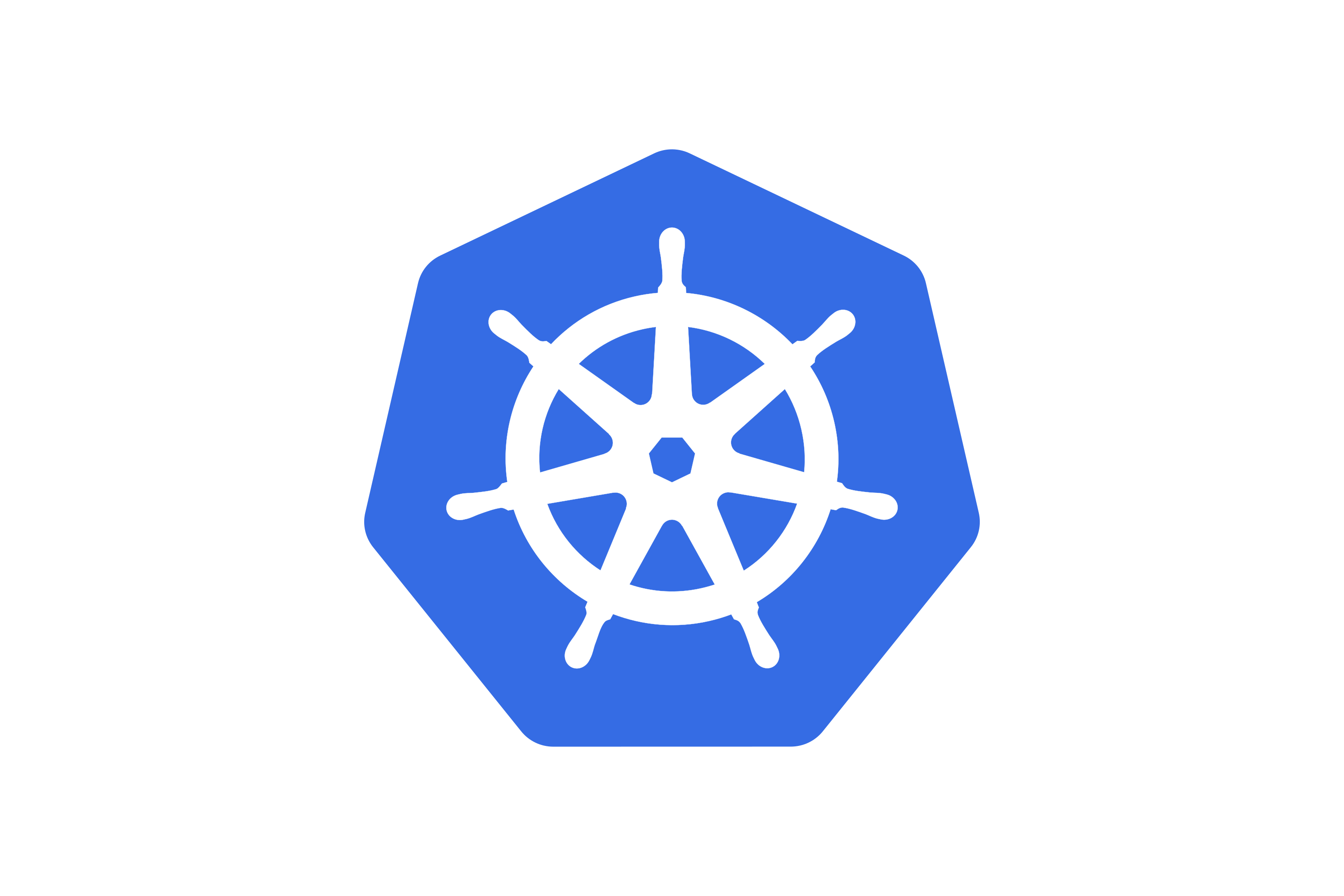 While scheduling classes for my final semester of college, I was very eager to do something different. Like many of my computer science peers, I had grown tired of the typical class where we have to reinvent the wheel when learning new concepts.
While scheduling classes for my final semester of college, I was very eager to do something different. Like many of my computer science peers, I had grown tired of the typical class where we have to reinvent the wheel when learning new concepts.
202. 3 Free Ways to Learn Kubernetes and Red Hat OpenShift
 I've compiled a list of three resources where you can get started with Kubernetes and Red Hat OpenShift, Red Hat's enterprise Kubernetes platform.
I've compiled a list of three resources where you can get started with Kubernetes and Red Hat OpenShift, Red Hat's enterprise Kubernetes platform.
203. Deploying Apache Kafka With Kubernetes
 Deploying Kafka on Kubernetes is a low-effort approach to setting up an event-driven architecture to support your API ecosystem in the cloud.
Deploying Kafka on Kubernetes is a low-effort approach to setting up an event-driven architecture to support your API ecosystem in the cloud.
204. Delays in app delivery to Kubernetes
 Enterprises around the world are waking up to the containers and Kubernetes trend. There are numerous benefits of delivering an application as container packages to Kubernetes but at the same time, the process of app containerization and the subsequent app deployment to Kubernetes can hit many roadblocks. Since the idea of using Kubernetes and containers for app delivery is fairly recent, the transition from traditional delivery systems to these modern delivery systems is a bumpy ride.
Enterprises around the world are waking up to the containers and Kubernetes trend. There are numerous benefits of delivering an application as container packages to Kubernetes but at the same time, the process of app containerization and the subsequent app deployment to Kubernetes can hit many roadblocks. Since the idea of using Kubernetes and containers for app delivery is fairly recent, the transition from traditional delivery systems to these modern delivery systems is a bumpy ride.
205. How To Deploy A Secure Django Application on Kubernetes
 Deploy Django on Kubernetes in a few clicks without even Dockerizing your application.
Deploy Django on Kubernetes in a few clicks without even Dockerizing your application.
206. How to Build Your Own Observability Platform on Kubernettes
 End-to-end full observability using Odigos and other back-end observability tools.
End-to-end full observability using Odigos and other back-end observability tools.
207. Understanding and Extending Kubernetes with Custom Resource Definitions API
 Intro
Intro
208. Speeding Up the AI Supercomputing Platform - A Practice at Unisound
 How to use Alluxio in real-world machine learning training scenarios to achieve significant training acceleration and solve platform IO bottlenecks.
How to use Alluxio in real-world machine learning training scenarios to achieve significant training acceleration and solve platform IO bottlenecks.
209. Building 28-Core Raspberry Pi Cluster from Scratch: Release The Kraken
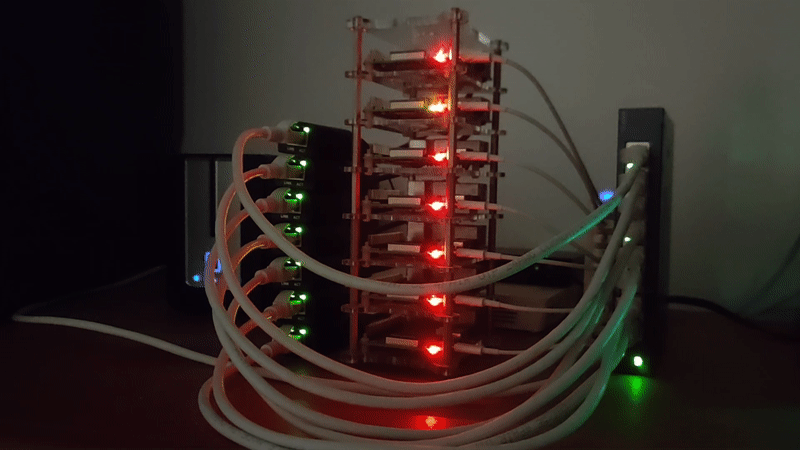 This is the second installment of my 'How I built' trilogy detailing the build process of all 3 of my clusters. Read the first here.
This is the second installment of my 'How I built' trilogy detailing the build process of all 3 of my clusters. Read the first here.
210. How to Autoscale an Amazon Elastic Kubernetes Service Cluster
 In this article we are going to consider the two most common methods for Autoscaling in EKS cluster:
In this article we are going to consider the two most common methods for Autoscaling in EKS cluster:
211. How to Reduce Costs via Dense Google Kubernetes Engine (GKE) Cluster Packing
 Since the load is unstable, we pack modules very tightly to save on costs, and reselling resources is our best strategy.
Since the load is unstable, we pack modules very tightly to save on costs, and reselling resources is our best strategy.
212. Kubernetes' Impact on Development
 Kubernetes is the reason containerization has garnered acceptance among enterprises. Whether you like it or not, it has made your life as a developer easy.
Kubernetes is the reason containerization has garnered acceptance among enterprises. Whether you like it or not, it has made your life as a developer easy.
213. How to Use Cloud-init to Self-Register k3OS Clusters to Rancher
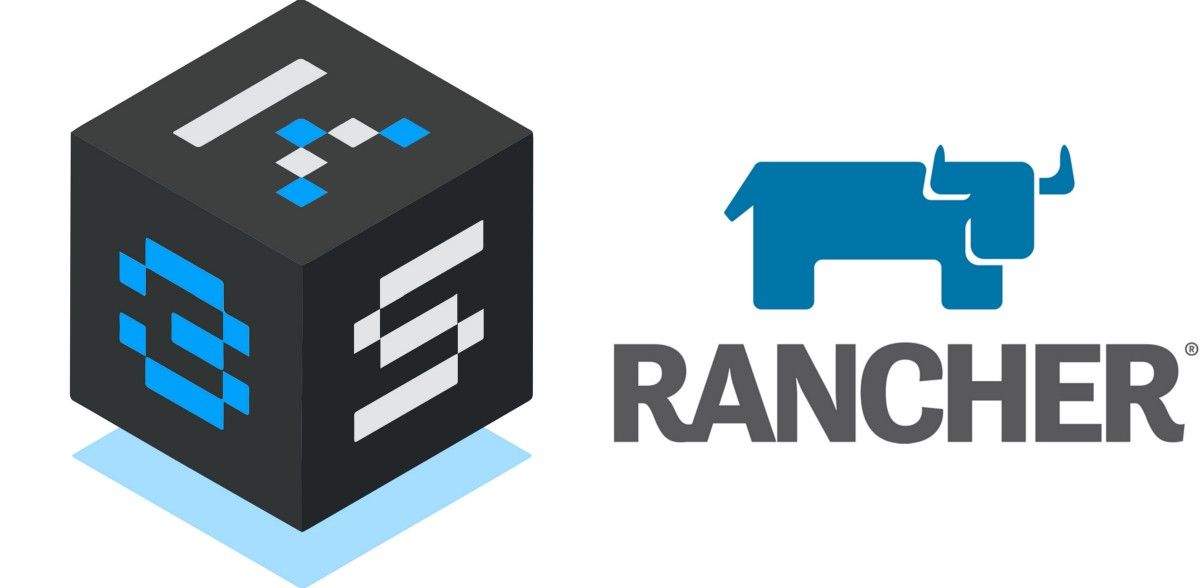 The lightweight Kubernetes OS that is known as k3OS has quickly been gaining popularity in the cloud-native community as a compact and edge-focused Linux distribution that cuts the fat away from the traditional K8s distro. While k3OS is picking up steam, it is still on the bleeding edge and there is still a bit of a shortage of learning material out there for it.
The lightweight Kubernetes OS that is known as k3OS has quickly been gaining popularity in the cloud-native community as a compact and edge-focused Linux distribution that cuts the fat away from the traditional K8s distro. While k3OS is picking up steam, it is still on the bleeding edge and there is still a bit of a shortage of learning material out there for it.
214. Everything you need to know about Helm – Part I
 Helm is a package manager for Kubernetes. In this tutorial we will explore Helm tasks, components, charts, and installations.
Helm is a package manager for Kubernetes. In this tutorial we will explore Helm tasks, components, charts, and installations.
215. Solid Tips on How to Manage and Monitor Chaos via Litmus Custom Resources
 Litmus is a Cross-Cloud Chaos Orchestration framework for practising chaos engineering in cloud-native environments. Learn how chaos is orchestrated with Litmus
Litmus is a Cross-Cloud Chaos Orchestration framework for practising chaos engineering in cloud-native environments. Learn how chaos is orchestrated with Litmus
216. Accessing Kubernetes Using Expose API and User Interface Using Sidecar Pattern
 Kubernetes is an open-source container-orchestration system for automating application deployment, scaling, and management.
Kubernetes is an open-source container-orchestration system for automating application deployment, scaling, and management.
217. Kubernetes Day-2 Operations, Part I
 Kubernetes is the de-facto standard for container clustering and orchestration. Its adoption is soaring in cloud-native applications.
Kubernetes is the de-facto standard for container clustering and orchestration. Its adoption is soaring in cloud-native applications.
218. Creating and Provisioning Azure Container Apps with Bicep
 Using Bicep, we can deploy Azure Container Apps quickly and easily!
Using Bicep, we can deploy Azure Container Apps quickly and easily!
219. How To Start Using Microservices
 Microservices are completely disrupting the way we build applications nowadays. This is one of the hottest trends when it comes to software architecture. More and more developers are adopting it.
Microservices are completely disrupting the way we build applications nowadays. This is one of the hottest trends when it comes to software architecture. More and more developers are adopting it.
220. Apache Cassandra – An Essentials Guide
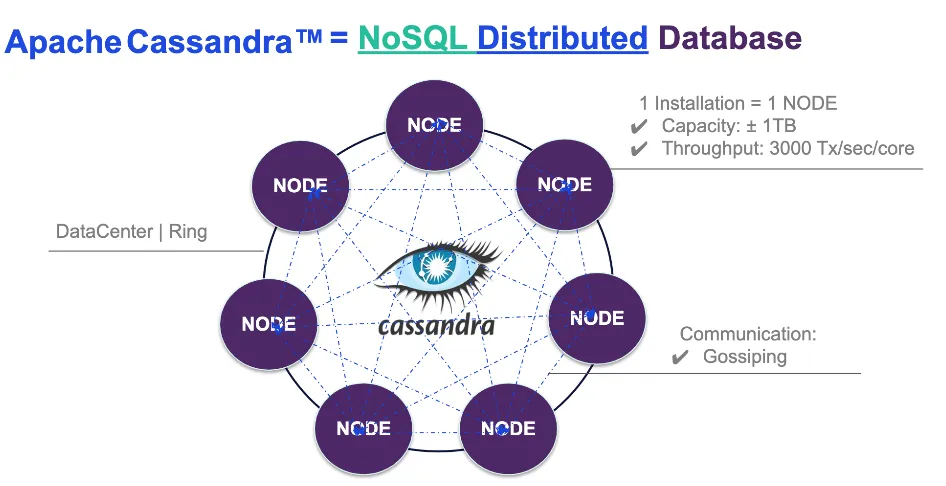 Need to get up to speed on Cassandra and learn how it can benefit your software development practices? These are the essentials that cover the basics.
Need to get up to speed on Cassandra and learn how it can benefit your software development practices? These are the essentials that cover the basics.
221. Kubernetes: Monitoring, Reducing, and Optimizing Your Costs
 Over the past two years at Magalix, we have focused on building our system, introducing new features, and scaling our infrastructure and microservices. During this time, we had a look at our Kubernetes clusters utilization and found it to be very low. We were paying for resources we didn’t use, so we started a cost-saving practice to increase cluster utilization, use the resources we already had and pay less to run our cluster.
Over the past two years at Magalix, we have focused on building our system, introducing new features, and scaling our infrastructure and microservices. During this time, we had a look at our Kubernetes clusters utilization and found it to be very low. We were paying for resources we didn’t use, so we started a cost-saving practice to increase cluster utilization, use the resources we already had and pay less to run our cluster.
222. On Building A Development Pipeline With Kubernetes
 A few years ago, digital transformation led to enterprises moving away from traditional monolithic architectures to microservices.
A few years ago, digital transformation led to enterprises moving away from traditional monolithic architectures to microservices.
223. Why CIOs Must Focus on Accelerating Kubernetes Adoption
 The blog discusses why CIOs must focus on accelerating Kubernetes adoption, as a futuristic technology, within their enterprises to ensure business continuity.
The blog discusses why CIOs must focus on accelerating Kubernetes adoption, as a futuristic technology, within their enterprises to ensure business continuity.
224. Containers 101: Kube Explained Part 2
 In our previous post, Kube Explained: Part 1, I described how the introduction of the cloud resulted in CI/CD, Microservices, and a massive amount of pressure to standardize backend infrastructure tooling.
In our previous post, Kube Explained: Part 1, I described how the introduction of the cloud resulted in CI/CD, Microservices, and a massive amount of pressure to standardize backend infrastructure tooling.
225. Trends That Will Impact Data Analytics, AI, and Cloud in 2023
 As we enter 2023, the world of analytics, AI, and cloud is entering an exciting new phase, with a wide range of innovations and developments set to reshape the
As we enter 2023, the world of analytics, AI, and cloud is entering an exciting new phase, with a wide range of innovations and developments set to reshape the
226. 2023 Will Be the Year of Kubernetes (and Other Predictions in the Cloud and Infrastructure Industry)
 Dive into the new year’s top cloud and infra-tech trends, straight from a cloud and infrastructure technology fanatic.
Dive into the new year’s top cloud and infra-tech trends, straight from a cloud and infrastructure technology fanatic.
227. How to Ensure DevOps Security in CI/CD Environments
 Security is a product feature, and everyone involved in the DevOps workflow is responsible for it. Here are some key measures to ensure greater security.
Security is a product feature, and everyone involved in the DevOps workflow is responsible for it. Here are some key measures to ensure greater security.
228. How to Set Up Jenkins on Kubernetes
 This guide will walk you through the process of setting up Jenkins on Kubernetes. Jenkins is a widely-used open source CI server that provides hundreds of plugins to support building, deploying and automating your projects.
This guide will walk you through the process of setting up Jenkins on Kubernetes. Jenkins is a widely-used open source CI server that provides hundreds of plugins to support building, deploying and automating your projects.
229. Kubernetes in the Cloud: Strategies for Effective Multi Cloud Implementations
 Kubernetes is a highly popular container orchestration platform. Multi cloud is a strategy that leverages cloud resources from multiple vendors. Multi cloud strategies have become popular because they help prevent vendor lock-in and enable you to leverage a wide variety of cloud resources. However, multi cloud ecosystems are notoriously difficult to configure and maintain.
Kubernetes is a highly popular container orchestration platform. Multi cloud is a strategy that leverages cloud resources from multiple vendors. Multi cloud strategies have become popular because they help prevent vendor lock-in and enable you to leverage a wide variety of cloud resources. However, multi cloud ecosystems are notoriously difficult to configure and maintain.
230. How to Use KEDA and Prometheus to Scale your Kubernetes Workloads
 Learn how to scale your kubernetes deployments with keda and prometheus
Learn how to scale your kubernetes deployments with keda and prometheus
231. How Using Self-Hosted GitHub Runners Can Save You a Fortune

232. K3d for Local Kubernetes Development
 k3d is wrapper around k3s - Lightweight Kubernetes, which helps to run k3d in docker containers. The blog is all about local Kubernetes development using k3d.
k3d is wrapper around k3s - Lightweight Kubernetes, which helps to run k3d in docker containers. The blog is all about local Kubernetes development using k3d.
233. Helm2 vs Helm3: Part 1
 So Helm3 finally has been released. Everybody saying goodbye to Tiller but, that’s not the only change in Helm3. Let’s discuss what else has changed.
So Helm3 finally has been released. Everybody saying goodbye to Tiller but, that’s not the only change in Helm3. Let’s discuss what else has changed.
234. Introducing Our Low Code Machine Learning Platform
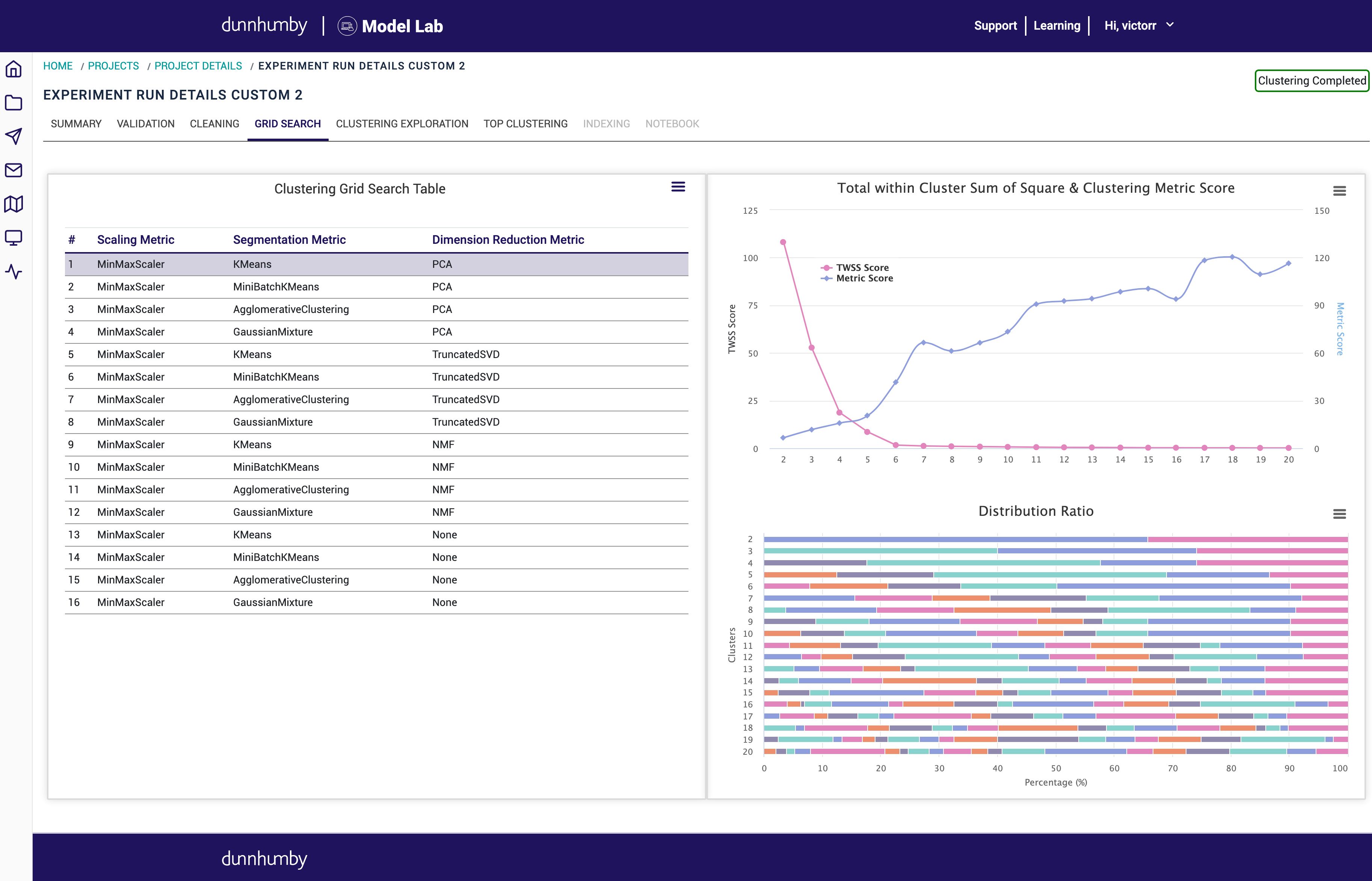 We are very excited to release the free tier of dunnhumby Model Lab as part of our partnership with Microsoft. dunnhumby Model Lab is an application that provides automated pipelines for deploying machine learning algorithms and has been used to build millions of models on behalf of our clients.
We are very excited to release the free tier of dunnhumby Model Lab as part of our partnership with Microsoft. dunnhumby Model Lab is an application that provides automated pipelines for deploying machine learning algorithms and has been used to build millions of models on behalf of our clients.
235. On the Original Definition of PaaS
 Why Platform-as-a-Service (PaaS) still stands a chance
Why Platform-as-a-Service (PaaS) still stands a chance
236. I Thought I Had Observability - My Short DNS Story
 DNS Kubernetes improvements, How to change ndots option default value of dns in Kubernetes. DNS k8s best practices.
DNS Kubernetes improvements, How to change ndots option default value of dns in Kubernetes. DNS k8s best practices.
237. Beginner's Guide To Telepresence: Develop Your K8s Application Locally
 This post explains how Telepresence can be used to improve the developer experience for apps being developed for Kubernetes and includes a demo.
This post explains how Telepresence can be used to improve the developer experience for apps being developed for Kubernetes and includes a demo.
238. How to Install Anthos Bare Metal on Intel NUCs: A Beginner's Guide
 Anthos on Bare Metal allows you to spin up a cluster from as few as 2 Intel NUCs. It’s a relatively straightforward process.
Anthos on Bare Metal allows you to spin up a cluster from as few as 2 Intel NUCs. It’s a relatively straightforward process.
239. Building a Small K8s Cluster on a Single PC - Chapter 2 - Forging the Cluster.
 Second article where I review my guides about building a small K8s cluster on a single PC with Proxmox VE, Debian VMs, and K3s.
Second article where I review my guides about building a small K8s cluster on a single PC with Proxmox VE, Debian VMs, and K3s.
240. How to Build Small K8s Cluster on a Single PC - Chapter 3 - Crafting the Appscape.
 Third article where I review my guides about building a small K8s cluster on a single PC with Proxmox VE, Debian VMs, and K3s.
Third article where I review my guides about building a small K8s cluster on a single PC with Proxmox VE, Debian VMs, and K3s.
241. Getting Started With Creating, Managing an AWS ECS Cluster With Terraform
 In this tutorial, you'll define AWS resources using Terraform and how resource definitions translate to actual resources created on AWS
In this tutorial, you'll define AWS resources using Terraform and how resource definitions translate to actual resources created on AWS
242. Top 7 Kubernetes Security Practices Everyone Should Follow

243. 5 Tips for Creating Docker Images with Spring Boot
 Keep up with the latest and best practices to build spring boot docker images.
Keep up with the latest and best practices to build spring boot docker images.
244. Step-By-Step Tutorial To Deploy A Node.js App To Kubernetes
 The Cloud Foundry project cf-for-k8s, along with a Cloud Native Buildpacks implementation called Paketo Buildpacks, can provide a path for JavaScript applicatio
The Cloud Foundry project cf-for-k8s, along with a Cloud Native Buildpacks implementation called Paketo Buildpacks, can provide a path for JavaScript applicatio
245. 8 Fallacies of Continuous Delivery
 A quintessential piece for anyone working with distributed systems is the Fallacies of Distributed Computing by L Peter Deutsch. Even when working with modern platforms such as Kubernetes, the assertions made in the Fallacies of Distributed Computing prove to be very true around latency, bandwidth and system administration.
A quintessential piece for anyone working with distributed systems is the Fallacies of Distributed Computing by L Peter Deutsch. Even when working with modern platforms such as Kubernetes, the assertions made in the Fallacies of Distributed Computing prove to be very true around latency, bandwidth and system administration.
246. [ANN] Serverless Kubernetes Solution For Cloud-Native Apps by CTO.ai
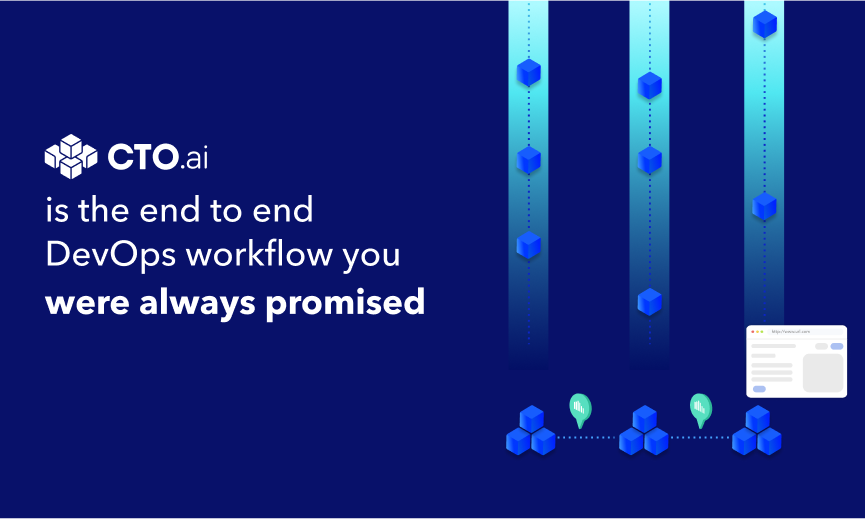 CTO.ai Launches Serverless Kubernetes Platform for Managing Cloud Native Apps
CTO.ai Launches Serverless Kubernetes Platform for Managing Cloud Native Apps
247. 3 Tips for Effective Kubernetes Application Troubleshooting
 While debugging applications is slightly easier than solving issues with K8s clusters, it’s hardly a straightforward task. Here are three ways to simplify it.
While debugging applications is slightly easier than solving issues with K8s clusters, it’s hardly a straightforward task. Here are three ways to simplify it.
248. Open-Source Testing Mechanism for Kubernetes Applications
 Without a doubt, Kubernetes is one of the top players in the container orchestration platforms game.
Without a doubt, Kubernetes is one of the top players in the container orchestration platforms game.
249. Scaling Symfony Consumers using Kubernetes [A How To Guide]
 At Debricked we have been using Symfony for our web backend for a while now. It has served us very well and when they announced the Messenger component back in Symfony 4.1, we were eager to try it out. Since then we have used the component for asynchronous queuing emails.
At Debricked we have been using Symfony for our web backend for a while now. It has served us very well and when they announced the Messenger component back in Symfony 4.1, we were eager to try it out. Since then we have used the component for asynchronous queuing emails.
250. How To Run Cloud-Native Performance Benchmarks with Kubestone
 Intro
Intro
251. GKE vs. EKS: Comparing Google Kubernetes Engine and Amazon Elastic Kubernetes Service
 There are key differences between GKE and EKS. While EKS is a market leader, read more to find out why GKE can give EKS a run for its money.
There are key differences between GKE and EKS. While EKS is a market leader, read more to find out why GKE can give EKS a run for its money.
252. How To Improve Your Docker Build Time in GitLab CI
 Make your containerized CI environments truly useful by accelerating your Docker builds
Make your containerized CI environments truly useful by accelerating your Docker builds
253. How To Deploy A Scalable Cloud Storage Using Rook And Ceph Storage [Part 1]
 It goes without saying that if you want to orchestrate containers at this point, Kubernetes is what you use to do it. Sure, there may be a few Docker Swarm holdouts still around, but for the most part, K8s has cemented itself as the industry standard for container orchestration solutions. As Kubernetes matures, the tools that embody its landscape begin to mature along with it. One of the areas we have seen some optimization, in particular, is in cloud-native storage solutions.
It goes without saying that if you want to orchestrate containers at this point, Kubernetes is what you use to do it. Sure, there may be a few Docker Swarm holdouts still around, but for the most part, K8s has cemented itself as the industry standard for container orchestration solutions. As Kubernetes matures, the tools that embody its landscape begin to mature along with it. One of the areas we have seen some optimization, in particular, is in cloud-native storage solutions.
254. Azure DevOps: How to Build, Test And Deploy to Azure Kubernetes Service

255. Running Linux Applications as Unikernels with K8S
 If you've read some of my prior articles you might've thought I'd never write this one huh? :) Well here goes.
If you've read some of my prior articles you might've thought I'd never write this one huh? :) Well here goes.
256. Kubernetes Day-2 Operations – Part III
 Kubernetes has revolutionized the way developers run their workloads by abstracting a part of the actual infrastructure
Kubernetes has revolutionized the way developers run their workloads by abstracting a part of the actual infrastructure
257. Get your First Container Up on Kubernetes Using the Free Version of Platform9 Managed Kubernetes
 Kubernetes in the leading Container Orchestration platform that allows you to apply fast and streamlined infrastructure workloads using a declarative API.
Kubernetes in the leading Container Orchestration platform that allows you to apply fast and streamlined infrastructure workloads using a declarative API.
258. Using the Kubernetes Controller for Envoy (Part 2)
 In this article, I will show you how you can write a controller that will monitor changes in custom resources.
In this article, I will show you how you can write a controller that will monitor changes in custom resources.
259. Get a Free Week on Cloud Academy To Kickstart Your Tech Training
 Are you looking to make a jump in your technical career? Want to get trained or certified on AWS, Azure, Google Cloud Platform, DevOps, Kubernetes, Python, or another in-demand skill?
Are you looking to make a jump in your technical career? Want to get trained or certified on AWS, Azure, Google Cloud Platform, DevOps, Kubernetes, Python, or another in-demand skill?
260. Creating Microservices: Key Principles and Concepts of Microservices Architecture
 Microservices architecture allows an application to be separated into parts which work together
Microservices architecture allows an application to be separated into parts which work together
261. Deploying Sendy On Kubernetes to Reduce Newsletter Costs 100x - Part 1
 Sendy is an amazing application. It's basically software that gives you the ability to utilize Amazon SES to send newsletters to your members for 100x cheaper!
Sendy is an amazing application. It's basically software that gives you the ability to utilize Amazon SES to send newsletters to your members for 100x cheaper!
262. Kubernetes Day-2 Operations – Part II
 It is undeniably confusing if you’re unfamiliar with infrastructure technologies and leaning towards DevOps principles will further complicate the situation
It is undeniably confusing if you’re unfamiliar with infrastructure technologies and leaning towards DevOps principles will further complicate the situation
263. Container Orchestration Trends for 2023: Kubernetes, AWS Fargate, Docker and Beyond
 Containers have been around for a while now, but the industry is just starting to see the benefits of containerization.
Containers have been around for a while now, but the industry is just starting to see the benefits of containerization.
264. CAST AI Extends Support to AWS, Azure, and GCP After Raising $10M
 CAST AI platform that optimizes cloud spend now supports all three major cloud service providers: Amazon Web Services, Google Cloud Platform, and Azure.
CAST AI platform that optimizes cloud spend now supports all three major cloud service providers: Amazon Web Services, Google Cloud Platform, and Azure.
265. How We Built Plural – A Kubernetes Powered Multi-Cloud Application Delivery Platform
 How we built a kubernetes powered multi-cloud application delivery platform
How we built a kubernetes powered multi-cloud application delivery platform
266. How to Maximize Cloud ROI With Containerization - Part 1
 Struggling to make the most of cloud-hosted applications? Learn about containerization, its optimization challenges, and potential solutions.
Struggling to make the most of cloud-hosted applications? Learn about containerization, its optimization challenges, and potential solutions.
267. Connecting Dots: Go, Docker and k8s [Part 2]
 Nowadays, the successful application often consists of containers and some sort of container management system to ease scaling, reduce downtime, and more.
Nowadays, the successful application often consists of containers and some sort of container management system to ease scaling, reduce downtime, and more.
268. How To Deploy Firecracker MicroVMs using Weave FireKube
 Introduction
Introduction
269. Why Infrastructure as a Service Is Ideal For Startups
 Overview
Overview
270. Building a Multi-Tenant gRPC Development Platform with Ambassador and AWS EKS

271. Scale Your Data Pipelines with Airflow and Kubernetes
 It doesn’t matter if you are running background tasks, preprocessing jobs or ML pipelines. Writing tasks is the easy part. The hard part is the orchestration— Managing dependencies among tasks, scheduling workflows and monitor their execution is tedious.
It doesn’t matter if you are running background tasks, preprocessing jobs or ML pipelines. Writing tasks is the easy part. The hard part is the orchestration— Managing dependencies among tasks, scheduling workflows and monitor their execution is tedious.
272. Cloud Cost Management Vs. Cloud Cost Optimization: Which is Better?
 Cloud cost management doesn’t guarantee savings, automated optimization does.
Cloud cost management doesn’t guarantee savings, automated optimization does.
273. Kuma 1.0 GA Released With 70+ New Features & Improvements
 Today is a big day for Kuma! Kuma 1.0 is now generally available with over 70 features and improvements ready to use and deploy in production to create modern distributed service meshes for every application running on multiple clusters, clouds, including Kubernetes and VM-based workloads.
Today is a big day for Kuma! Kuma 1.0 is now generally available with over 70 features and improvements ready to use and deploy in production to create modern distributed service meshes for every application running on multiple clusters, clouds, including Kubernetes and VM-based workloads.
274. What Are The Common Kubernetes Security Vulnerabilities
 Kubernetes has become the de-facto standard for managing containerized applications. However, this usage also led to an increased attack surface for K8s.
Kubernetes has become the de-facto standard for managing containerized applications. However, this usage also led to an increased attack surface for K8s.
275. How a Unicorn Startup in Japan Leveraged the Power of Microservices
 Startup experience in Mercari. Road to microservices from monolith.
Startup experience in Mercari. Road to microservices from monolith.
276. Kubernetes Explained Simply: #1 Kubectl Hack
 To say that Kubernetes uses a bit of YAML is like saying that a few people put some of their code on GitHub – accurate, but severely understated.
To say that Kubernetes uses a bit of YAML is like saying that a few people put some of their code on GitHub – accurate, but severely understated.
277. How to troubleshoot potential DOS attacks
 I've had a few scares in my career as a developer, but none come close to the pure horror of unsuccessfully trying to ssh into your VM. Normal people tend to be scared of spiders, snakes or saws.
I've had a few scares in my career as a developer, but none come close to the pure horror of unsuccessfully trying to ssh into your VM. Normal people tend to be scared of spiders, snakes or saws.
278. An In-Depth Guide to Blue-Green Deployments with Materialize
 Minimizing downtime during any deployment is a key part of any successful deployment strategy. There are many ways to achieve this.
Minimizing downtime during any deployment is a key part of any successful deployment strategy. There are many ways to achieve this.
279. Unleashing the Power of Kubernetes 1.26 Using the New ValidatingAdmissionPolicy Feature
 The Kubernetes crew just dropped the latest version, k8s 1.26 a few days ago, and it’s packed with some seriously cool new features.
The Kubernetes crew just dropped the latest version, k8s 1.26 a few days ago, and it’s packed with some seriously cool new features.
280. How to Use Kong for Full-stack Application Deployments with Kubernetes
 Kubernetes has become the name of the game when it comes to container orchestration. It allows teams to deploy and scale applications to meet changes in demand while providing a great developer experience.
Kubernetes has become the name of the game when it comes to container orchestration. It allows teams to deploy and scale applications to meet changes in demand while providing a great developer experience.
281. How to Successfully Set Up KrakenD on GKE: A Step by Step Guide
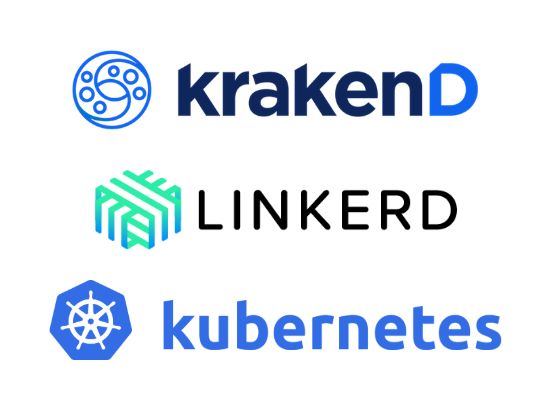 Definitive guide to setup KrakenD on GKE
Definitive guide to setup KrakenD on GKE
282. Key Questions to Ask your DevOps Teams About Containers and Kubernetes
 DevOps teams are responsible for balancing two important forces
in their organizations’ software development efforts: shorter delivery cycle
times for applications that continue to increase in size and diversity.
DevOps teams are responsible for balancing two important forces
in their organizations’ software development efforts: shorter delivery cycle
times for applications that continue to increase in size and diversity.
283. Kubernetes API Operator: Apply API Management for Istio Microservices

284. How To Build CI/CD Pipelines Behind Your Firewall Using Codefresh Runner
 Continuous Integration/Delivery (CI/CD) is one of the most obvious candidates for moving to a Kubernetes cluster, as you automatically enjoy all the benefits of Kubernetes scalability. In traditional CI solutions, companies employ a fixed set of build nodes that teams must manually monitor and upgrade.
Continuous Integration/Delivery (CI/CD) is one of the most obvious candidates for moving to a Kubernetes cluster, as you automatically enjoy all the benefits of Kubernetes scalability. In traditional CI solutions, companies employ a fixed set of build nodes that teams must manually monitor and upgrade.
285. 3 Types of Security Policies You Can Use with Your Kubernetes Pods
 On August 20, 2020, a provider of access management tools released an advisory detailing several misconfiguration issues that affected the kubelet. This feature of Kubernetes functions as the primary “node agent” running on each node. In order to support this functionality, the kubelet maintains full control over a pod running in a node.
On August 20, 2020, a provider of access management tools released an advisory detailing several misconfiguration issues that affected the kubelet. This feature of Kubernetes functions as the primary “node agent” running on each node. In order to support this functionality, the kubelet maintains full control over a pod running in a node.
286. Gathering Service Mesh Observability Metrics With Kuma
 Learn how to automate service mesh observability with Kuma, no matter how many services you have running in different clouds and Kubernetes clusters.
Learn how to automate service mesh observability with Kuma, no matter how many services you have running in different clouds and Kubernetes clusters.
287. The Basics of GitOps and Secure Deployment in Kubernetes
 Today I would like to discuss secrets and GitOps in the K8S world.
Today I would like to discuss secrets and GitOps in the K8S world.
288. How To Deploy Code Faster Using Kubernetes
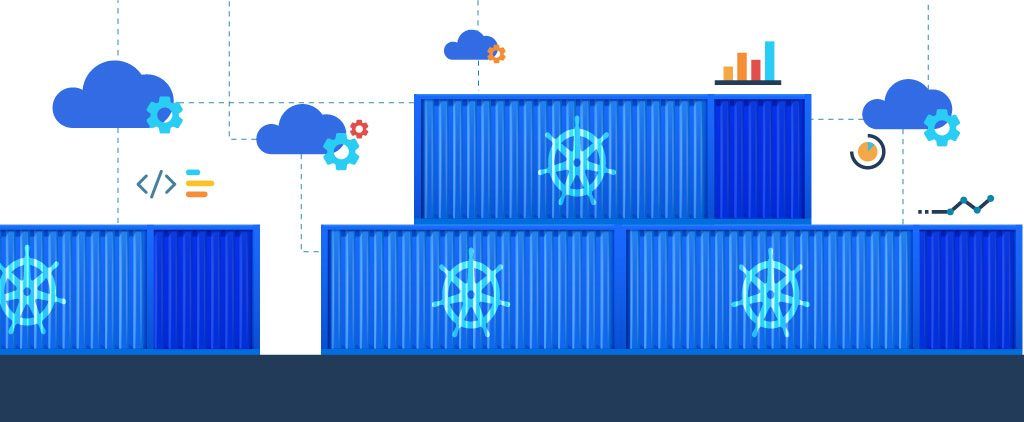 First, let us address the underlying question:
First, let us address the underlying question:
289. The Day we Started to Protect DevOps with Blockchain
 I still remember February 2018 very well. Many people were in a really bad mood when it came to Blockchain or Distributed Ledger Technology (DLT), mainly because the price of most cryptocurrencies made a nose dive and the Disillusionment started.
I still remember February 2018 very well. Many people were in a really bad mood when it came to Blockchain or Distributed Ledger Technology (DLT), mainly because the price of most cryptocurrencies made a nose dive and the Disillusionment started.
290. SQL Server container in Azure Kubernetes Services (AKS)

291. An Introduction to Microservice Messaging in Kubernetes
 In this article, I’ll share the benefits of messaging in Kubernetes and the difficulties that can come with legacy solutions.
In this article, I’ll share the benefits of messaging in Kubernetes and the difficulties that can come with legacy solutions.
292. 4 Key Observability Metrics for Distributed Applications
 A common architectural design pattern these days is to break up an application monolith into smaller microservices. Each microservice is then responsible for a specific aspect or feature of your app. For example, one microservice might be responsible for serving external API requests, while another might handle data fetching for your frontend.
A common architectural design pattern these days is to break up an application monolith into smaller microservices. Each microservice is then responsible for a specific aspect or feature of your app. For example, one microservice might be responsible for serving external API requests, while another might handle data fetching for your frontend.
293. Grafana Loki: Architecture Summary and Running in Kubernetes
 Grafana Loki logging system architecture and components, its setup in Kubernetes from the Helm chart with AWS S3 as Single Store and boltdb-shipper for indexes.
Grafana Loki logging system architecture and components, its setup in Kubernetes from the Helm chart with AWS S3 as Single Store and boltdb-shipper for indexes.
294. Improving Security in your Microservices Architecture with Istio
 Security in a microservice architecture with Istio 1.12
Security in a microservice architecture with Istio 1.12
295. 4 Essential Steps To Convert a Kubernetes Fullstack App to Heroku
 In the last several years, Google’s Kubernetes project has generated huge buzz. The project has grown and evolved into a titan of the cloud infrastructure world.
In the last several years, Google’s Kubernetes project has generated huge buzz. The project has grown and evolved into a titan of the cloud infrastructure world.
296. How to Apply Security at the Source Using GitOps
 Discover how GitOps can improve your current methodology. Also, how to add an extra security layer to it and the tools available.
Discover how GitOps can improve your current methodology. Also, how to add an extra security layer to it and the tools available.
297. RBAC and PSPs Can Only Bring Your Kubernetes Security So Far
 Admins need to defend their organizations against a Kubernetes security incident. RBAC and PSPs will only get them so far; more security measures are needed.
Admins need to defend their organizations against a Kubernetes security incident. RBAC and PSPs will only get them so far; more security measures are needed.
298. Kubernetes 101- Concepts, Potential, and lots of Container Orchestrations
 A 10,000 foot view of Kubernetes Concepts and Architecture. This is a part of our 101 Series. For more, check out the Magalix Blog.
A 10,000 foot view of Kubernetes Concepts and Architecture. This is a part of our 101 Series. For more, check out the Magalix Blog.
299. Microsoft, The Unit of Deployment, and Win/Win Kubernetes with Co-Founder Joe Beda
 We recently had the opportunity to interview VMware’s principal engineer, Joe Beda, one of the creators of Kubernetes, as well as the Google Compute Engine. Joe
We recently had the opportunity to interview VMware’s principal engineer, Joe Beda, one of the creators of Kubernetes, as well as the Google Compute Engine. Joe
300. Why Spotify Migrated From Its Homegrown Orchestration Tool (Helios) to Kubernetes?
 Kubernetes optimizes audio streaming on Spotify. There's a story behind why it migrated from innate Helios to Kubernetes for container orchestration. Read on.
Kubernetes optimizes audio streaming on Spotify. There's a story behind why it migrated from innate Helios to Kubernetes for container orchestration. Read on.
301. Here's Why Java Is Still Alive And Kicking
 Let’s see what awaits our favorite Java language directly, and then — what awaits the IT-sphere.
Let’s see what awaits our favorite Java language directly, and then — what awaits the IT-sphere.
302. How to Move Infrastructure From Classic VMs to Containers Orchestrated By Kubernetes
 This blog post is about how ChartMogul retired its last pieces of infrastructure on DigitalOcean, marking its migration to AWS as complete.
This blog post is about how ChartMogul retired its last pieces of infrastructure on DigitalOcean, marking its migration to AWS as complete.
303. Overcoming Challenges Running the Disaggregated Analytics Stack in K8s
 Alluxio brings back data locality for the disaggregated analytics stack in K8s.
Alluxio brings back data locality for the disaggregated analytics stack in K8s.
304. The 3 Best Tools for Kubernetes Cluster Management
 This article helps you manage your cluster resources properly, especially in an autoscaling environment.
This article helps you manage your cluster resources properly, especially in an autoscaling environment.
305. Navigate Your Way to Production Bliss with Caretta
 The easiest way to map our cluster: Caretta - a standalone OSS tool, leveraging eBPF technology to be lightweight and frictionless
The easiest way to map our cluster: Caretta - a standalone OSS tool, leveraging eBPF technology to be lightweight and frictionless
306. How a .NET Core Migration Saved Us $428/mo and Boosted Performance
 We achieved these results through .NET to .NET Core migration. The need emerged while we have been supporting a complex KnockoutJS-based web application.
We achieved these results through .NET to .NET Core migration. The need emerged while we have been supporting a complex KnockoutJS-based web application.
307. How to Set Up a Kubernetes Cluster on Ubuntu 20.04/18.04/16.04 in 14 Steps
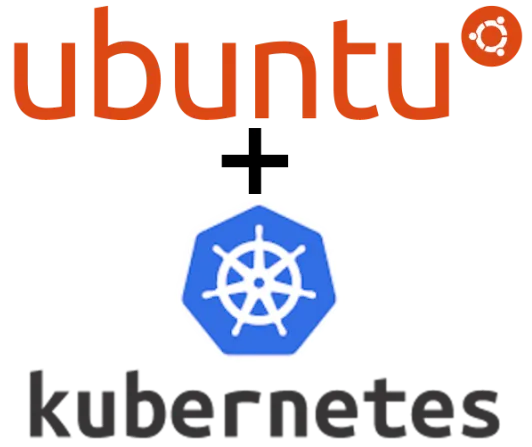 In this article on “14 Steps to Install kubernetes on Ubuntu 18.04 and 16.04” we are going to create Kubernetes cluster along with kubeadm on Ubuntu 18.04 (The same steps can be used for the Ubuntu 16.04 as well)
In this article on “14 Steps to Install kubernetes on Ubuntu 18.04 and 16.04” we are going to create Kubernetes cluster along with kubeadm on Ubuntu 18.04 (The same steps can be used for the Ubuntu 16.04 as well)
308. Configure Access to Multiple Kubernetes Clusters
 This guide will help you understand how you can manage access to Kubernetes clusters at scale and how you can streamline, optimize and orchestrate this process.
This guide will help you understand how you can manage access to Kubernetes clusters at scale and how you can streamline, optimize and orchestrate this process.
309. Containerization in 2023: 4 Tips for Successful Container Adoption
 Four tips for laying a solid foundation and making sure you're ready to handle the challenges of operating containerized workloads in production.
Four tips for laying a solid foundation and making sure you're ready to handle the challenges of operating containerized workloads in production.
310. Never Worry About Cloud-Native Tech Security Again
 If you have embraced the concept of cloud-native computing and principles, you are ahead; you are on the right path in today’s advanced and competitive IT environment. But we need to understand one thing that, moving your development environment and processes to a cloud-native environment can be daunting and challenging. Anybody can merely advise you to move from a monolithic application to a microservices architecture, but from where and how are the questions that need critical analysis.
If you have embraced the concept of cloud-native computing and principles, you are ahead; you are on the right path in today’s advanced and competitive IT environment. But we need to understand one thing that, moving your development environment and processes to a cloud-native environment can be daunting and challenging. Anybody can merely advise you to move from a monolithic application to a microservices architecture, but from where and how are the questions that need critical analysis.
311. 14 Steps to Debugging a Node.js Application Running in a Docker Container
 This blog post shows how you can debug a simple Node.js application running in a Docker container. The tutorial is laid out in a fashion that allows you to use it as a reference while you’re building your own Node.js application and is intended for readers who have prior exposure to JavaScript programming and Docker.
This blog post shows how you can debug a simple Node.js application running in a Docker container. The tutorial is laid out in a fashion that allows you to use it as a reference while you’re building your own Node.js application and is intended for readers who have prior exposure to JavaScript programming and Docker.
312. How to Create Serverless Functions with OpenFaaS in 17 Steps
 OpenFaaS is serverless functions framework that runs on top of Docker and Kubernetes. In this tutorial, you'll learn how to:
OpenFaaS is serverless functions framework that runs on top of Docker and Kubernetes. In this tutorial, you'll learn how to:
313. Heroku From the Perspective of a Cloud Architect
 As a freelance cloud architect, I spend my time reviewing and playing with the latest and greatest industry trends. Technologies like Kubernetes, ElasticSearch, and Prometheus fill my home and business infrastructure. After many hours of painful configuration and tweaking, they are now tuned to work exactly the way I want.
As a freelance cloud architect, I spend my time reviewing and playing with the latest and greatest industry trends. Technologies like Kubernetes, ElasticSearch, and Prometheus fill my home and business infrastructure. After many hours of painful configuration and tweaking, they are now tuned to work exactly the way I want.
314. 10 Free Courses to learn Docker and DevOps for Programmers and Software Developers

315. Commoditized Data Integration And How To Achieve It
 Most engineers in their professional life will have to deal with data integrations. In the past few years, a few companies such as Fivetran and StitchData have emerged for batch-based integrations, and Segment for event-based ones. But none of these companies have solved the problem of data integrations, which becomes more and more complex with the growing number of B2B tools that companies use.
Most engineers in their professional life will have to deal with data integrations. In the past few years, a few companies such as Fivetran and StitchData have emerged for batch-based integrations, and Segment for event-based ones. But none of these companies have solved the problem of data integrations, which becomes more and more complex with the growing number of B2B tools that companies use.
316. Migrating from DC/OS to Kubernetes: The Challenges You May Face
 This blog will discuss DC/OS and Kubernetes and what challenges you might face when migrating between these container platforms.
This blog will discuss DC/OS and Kubernetes and what challenges you might face when migrating between these container platforms.
317. Automatic TLS/SSL/HTTPS for Jenkins X Previews
 Sanely Enabling TLS using CertManager/LetsEncrypt with Jenkins X's ExposeController on every Preview build
Sanely Enabling TLS using CertManager/LetsEncrypt with Jenkins X's ExposeController on every Preview build
318. Deep Learning at Alibaba Cloud with Alluxio: How To Run PyTorch on HDFS
 This tutorial shows how Alibaba Cloud Container team runs PyTorch on HDFS using Alluxio under Kubernetes environment. The original Chinese article was published on Alibaba Cloud's engineering blog, then translated and published on Alluxio's Engineering Blog
This tutorial shows how Alibaba Cloud Container team runs PyTorch on HDFS using Alluxio under Kubernetes environment. The original Chinese article was published on Alibaba Cloud's engineering blog, then translated and published on Alluxio's Engineering Blog
319. Observability for Monitoring Microservices - Top 5 Ways!
 Here are some important tools and approaches to managing and monitoring Microservices. Take a look!
Here are some important tools and approaches to managing and monitoring Microservices. Take a look!
320. A Guide to Kubernetes Autoscaling Tools with Linode Kubernetes Engine
 Learn to use key Kubernetes autoscalers with short examples
Learn to use key Kubernetes autoscalers with short examples
321. Infrastructure as Code: Almost Everything You Need to Know
 Infrastructure as Code is invaluable when it comes to automating infrastructure by defining infrastructure configurations as code.
Infrastructure as Code is invaluable when it comes to automating infrastructure by defining infrastructure configurations as code.
322. Why Would You Opt for a Private EKS Cluster?
 Opting for a private cluster sparks a whole array of questions, and the answer to each question changes our cluster architecture ever so slightly.
Opting for a private cluster sparks a whole array of questions, and the answer to each question changes our cluster architecture ever so slightly.
323. Kubernetes Terraforming on Linode: Linode + Terraform + Kubernetes = Cloud Nirvana
 Let's discuss the process of "Terraforming" a Kubernetes cluster on Linode using Terraform to help organizations efficiently manage and scale infrastructure.
Let's discuss the process of "Terraforming" a Kubernetes cluster on Linode using Terraform to help organizations efficiently manage and scale infrastructure.
324. The Grand Cluster Hotel
 A non-technical explanation of Docker containers, Kubernetes, and clusters.
A non-technical explanation of Docker containers, Kubernetes, and clusters.
325. The Restrictive Pod Security Policies in Kubernetes
 Kubernetes Pod Security Policies
Kubernetes Pod Security Policies
326. Top 9 Security Practices at Kubernetes in 2020

327. Why Kubernetes Is The Best Technology For Running A Cloud-Native Database
 We’ve been talking about migrating workloads to the cloud for a long time, but a look at the application portfolios of many IT organizations demonstrates that there’s still a lot of work to be done. In many cases, challenges with persisting and moving data in clouds continue to be the key limiting factor slowing cloud adoption, despite the fact that databases in the cloud have been available for years.
We’ve been talking about migrating workloads to the cloud for a long time, but a look at the application portfolios of many IT organizations demonstrates that there’s still a lot of work to be done. In many cases, challenges with persisting and moving data in clouds continue to be the key limiting factor slowing cloud adoption, despite the fact that databases in the cloud have been available for years.
328. How to implement TLS OR SSL and set up HTTP(S) Load Balancing with Ingress for the Kubernetes API
 Learn step-by-step implement TLS/SSL and HTTPS Load Balancing setup with Ingress for the Kubernetes API for secure your applications using search manager.
Learn step-by-step implement TLS/SSL and HTTPS Load Balancing setup with Ingress for the Kubernetes API for secure your applications using search manager.
329. Infrastructure As Code: The Next Big Shift is Here
 Crossplane is the next step in the evolution of software infrastructure; provisioning, delivery and maintenance.
Crossplane is the next step in the evolution of software infrastructure; provisioning, delivery and maintenance.
330. A Simple Mistake That Costs Engineers Time and Money
 This expensive trap is easily avoided by approaching problems from the right mindset.
This expensive trap is easily avoided by approaching problems from the right mindset.
331. Why DevOps Engineers are so Obsessed with Kubernetes
 When we look at Kubernetes adoption, we can see that it has grown exponentially and this is evident from Airbnb’s Kubernetes adoption
When we look at Kubernetes adoption, we can see that it has grown exponentially and this is evident from Airbnb’s Kubernetes adoption
332. We're The DevOps Workflow You Were Promised
 host a monolith or microservice-based application; enterprises can layer the platform into their own private cloud cluster on kubernetes
host a monolith or microservice-based application; enterprises can layer the platform into their own private cloud cluster on kubernetes
333. Kubernetes Explained Simply: Label it to Enable it [Part 6]
 The building block of almost all Kubernetes deployments is the pod – one or more containers sharing a network stack. Pods are where the magic happens, where we get our logs, and where we spend most of our time troubleshooting outages and malfunctions.
The building block of almost all Kubernetes deployments is the pod – one or more containers sharing a network stack. Pods are where the magic happens, where we get our logs, and where we spend most of our time troubleshooting outages and malfunctions.
334. 10 Best Practices for Using Kubernetes Network Policies
 In this article, we will explore 10 best practices for using Kubernetes Network Policies to enhance the security and reliability of your applications.
In this article, we will explore 10 best practices for using Kubernetes Network Policies to enhance the security and reliability of your applications.
335. Kubernetes Resource Quotas
 Those who work with kubernetes often encounter resource quotas, such as cpu, memory, but few people know that these are not all quotas and what their mechanism is built on.
Those who work with kubernetes often encounter resource quotas, such as cpu, memory, but few people know that these are not all quotas and what their mechanism is built on.
336. We Built a Project Generator Because DevOps Needs One
 We, realMethods, are a small System Integrator. As a small SI with limited resources, we needed an advantage to compete for large engagements. We needed a lever we could pull that the bigger SIs could not. Before plowing head first into developing something, it was important to reflect on what we actually needed, had tried and experienced, what worked and did not work, and what mattered today that would still be relevant tomorrow.
We, realMethods, are a small System Integrator. As a small SI with limited resources, we needed an advantage to compete for large engagements. We needed a lever we could pull that the bigger SIs could not. Before plowing head first into developing something, it was important to reflect on what we actually needed, had tried and experienced, what worked and did not work, and what mattered today that would still be relevant tomorrow.
337. Act Like a Cloud Genius — Kill Zombie Capacity Quickly
 Zombie capacity is any infrastructure piece that looks like it’s doing something, but in reality, is lying unused and should be killed. Zombie capacity can accumulate quickly and can be one of your largest infrastructure debts. The zombies come out of the dark when you get your cloud bill, your users complain about your system’s performance or availability, or you look at cost or usage metrics that look shameful to you and are hard to defend to your CTO.
Zombie capacity is any infrastructure piece that looks like it’s doing something, but in reality, is lying unused and should be killed. Zombie capacity can accumulate quickly and can be one of your largest infrastructure debts. The zombies come out of the dark when you get your cloud bill, your users complain about your system’s performance or availability, or you look at cost or usage metrics that look shameful to you and are hard to defend to your CTO.
338. Kubernetes Readiness Probes Implementation in Microservices
 A great deal has already been written about readiness and liveness checks and I don’t intend to cover that ground again. Rather I want to cover, very specifically, their use in a large microservices architecture.
A great deal has already been written about readiness and liveness checks and I don’t intend to cover that ground again. Rather I want to cover, very specifically, their use in a large microservices architecture.
339. An Artist’s Homing Beacon to Creativity: Connecting with the Universe is The Ultimate Transcendence
![]() Join me on a roller coaster ride of lessons learned, winning Noonies 2022nfor Kubernetes, DevOps, Cheeky Genius of the Year, Retail, & spiritual transcendence.
Join me on a roller coaster ride of lessons learned, winning Noonies 2022nfor Kubernetes, DevOps, Cheeky Genius of the Year, Retail, & spiritual transcendence.
340. Deploy apps Fast with Google Kubernetes (GKE) UI
 As a tech leader and developer, I like to focus my effort in writing code or invest my efforts in architecting web software.
As a tech leader and developer, I like to focus my effort in writing code or invest my efforts in architecting web software.
341. The Long and Winding Road to Kubernetes
 A look at why enterprises are slow in moving to Kubernetes.
A look at why enterprises are slow in moving to Kubernetes.
342. Building a Dune Quote Service Using Kubernetes Ingress gRPC
 In this tutorial, I’ll explain how to deploy a gRPC service to Kubernetes and provide external access to the service using Kong's Ingress Controller.
In this tutorial, I’ll explain how to deploy a gRPC service to Kubernetes and provide external access to the service using Kong's Ingress Controller.
343. Using Workload Identity to Handle Keys in Google Kubernetes Engine
 Workload identity is a modern way to provision keys for pods running on Google Kubernetes Engine. It allows individual pods to use a service account with a suitable set of permissions, without manually managing Kubernetes secrets. In this article, we will describe Workload identity, compare it to other approaches, and finally show a real world example on how to configure a Kubernetes cluster with Workload identity enabled.
Workload identity is a modern way to provision keys for pods running on Google Kubernetes Engine. It allows individual pods to use a service account with a suitable set of permissions, without manually managing Kubernetes secrets. In this article, we will describe Workload identity, compare it to other approaches, and finally show a real world example on how to configure a Kubernetes cluster with Workload identity enabled.
344. Lessons Learned Using Docker from Development to Production
 Like many tools in the software developer's toolbox, docker is relatively easy to jump into and takes some time to master. Using it for a variety of projects over the years I've learned a few lessons along the way.
Like many tools in the software developer's toolbox, docker is relatively easy to jump into and takes some time to master. Using it for a variety of projects over the years I've learned a few lessons along the way.
345. How Namespace and Terraform Can Manage Kubernetes Environments
 In the last several years, Kubernetes has become the “go to” standard for managing and orchestrating containerized workloads. Thanks to it’s vendor agnostic nature, you can easily run Kubernetes almost anywhere, and in fact, all the major cloud vendors offer a managed Kubernetes service (AWS EKS, Google GKE, and Azure AKS).
In the last several years, Kubernetes has become the “go to” standard for managing and orchestrating containerized workloads. Thanks to it’s vendor agnostic nature, you can easily run Kubernetes almost anywhere, and in fact, all the major cloud vendors offer a managed Kubernetes service (AWS EKS, Google GKE, and Azure AKS).
346. CNCF Tools Overview: Are You Cloud-Native?
 Cloud computing is becoming more and more of a household name, with even the most conservative fields of business figuring out how to make the best use of it. Cloud computing usually starts with running a private cloud solution on premises before venturing onto the public cloud. Of course, the cloud is not a single uniform being. It may come from different providers, Amazon Web Services, Google Cloud Platform, and Microsoft Azure being the biggest players here. Or it may come with different visibility and hosting, that is, public (resides with the provider), private (self-hosted), or hybrid (which uses a bit of both). And the cloud can use different tools and APIs for management as well.
Cloud computing is becoming more and more of a household name, with even the most conservative fields of business figuring out how to make the best use of it. Cloud computing usually starts with running a private cloud solution on premises before venturing onto the public cloud. Of course, the cloud is not a single uniform being. It may come from different providers, Amazon Web Services, Google Cloud Platform, and Microsoft Azure being the biggest players here. Or it may come with different visibility and hosting, that is, public (resides with the provider), private (self-hosted), or hybrid (which uses a bit of both). And the cloud can use different tools and APIs for management as well.
347. Docker Dev Workflow for Apache Spark
 The benefits that come with using Docker containers are well known: they provide consistent and isolated environments so that applications can be deployed anywhere - locally, in dev / testing / prod environments, across all cloud providers, and on-premise - in a repeatable way.
The benefits that come with using Docker containers are well known: they provide consistent and isolated environments so that applications can be deployed anywhere - locally, in dev / testing / prod environments, across all cloud providers, and on-premise - in a repeatable way.
348. How To Adjust Size Of A Kubernetes Cluster Using Cluster Autoscaler
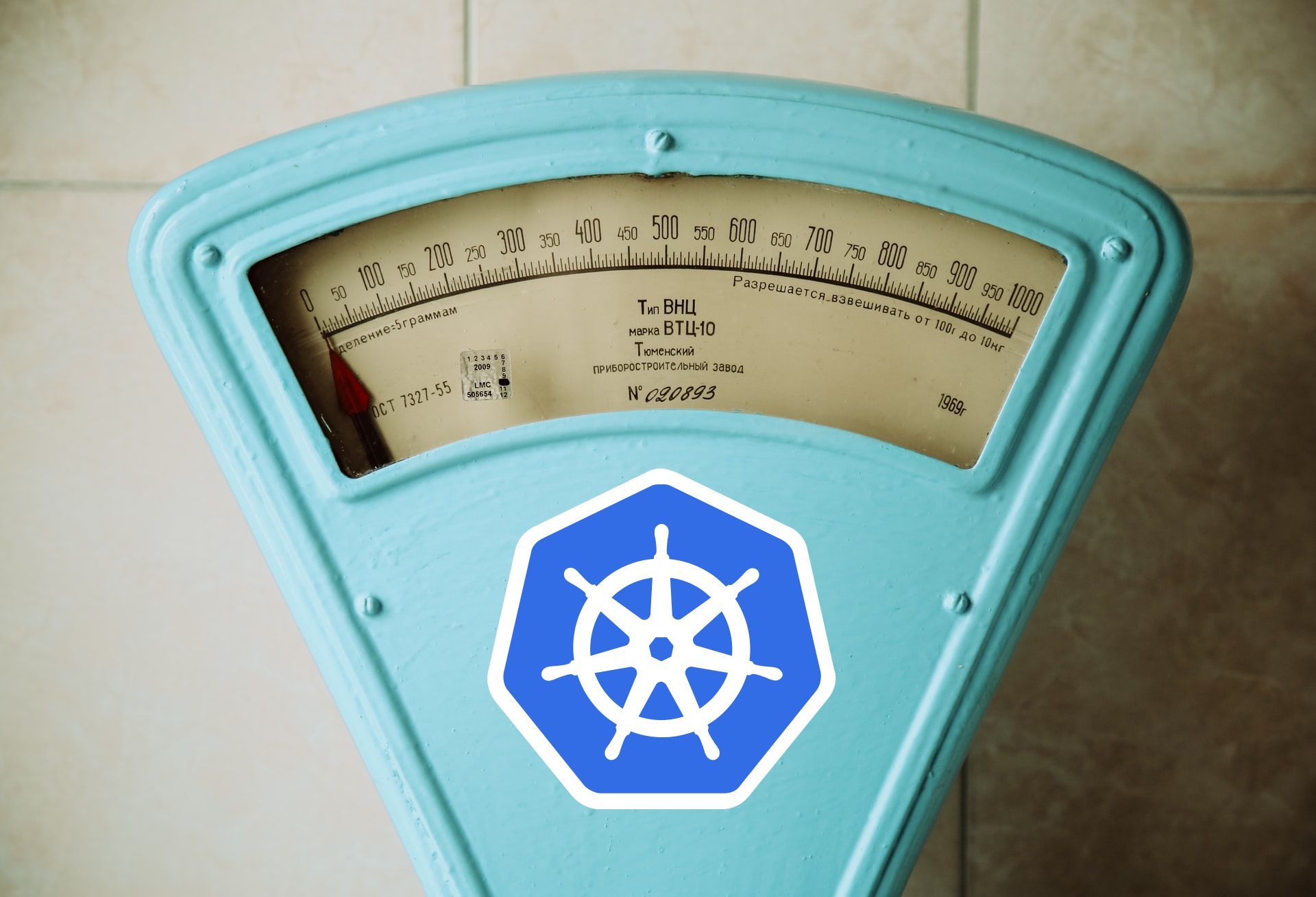 Spawning an AWS EKS cluster has never been easier and options are many: CloudFormation, Terraform or CDK. For the lazy, you can even use the great CLI utility eksctl from Weavework.
Spawning an AWS EKS cluster has never been easier and options are many: CloudFormation, Terraform or CDK. For the lazy, you can even use the great CLI utility eksctl from Weavework.
349. She's At The Edge Of The Cloud (Podcast Transcript)
 Amy Tom chats with Mark Gamble, the Product & Solutions Marketing Director at Couchbase, about Edge Computing and tiered data systems.
Amy Tom chats with Mark Gamble, the Product & Solutions Marketing Director at Couchbase, about Edge Computing and tiered data systems.
350. All You Need to Know About Spot Instances to Cut Down Your Cloud Service Expenses
 What are spot instances and how to use them to slash your cloud bill? Here are 6 key steps you need to take before getting a spot instance.
What are spot instances and how to use them to slash your cloud bill? Here are 6 key steps you need to take before getting a spot instance.
351. Enabling Multi-Cloud Kubernetes Communication with Skupper
 Intro
Intro
352. GitOps, Kubernetes, and Databases (Podcast Transcript)
 Amy, Matt, and Curt talk about migrating from a SQL database to a NoSQL database, what happens when shit hits the fan, and assessing your database usage.
Amy, Matt, and Curt talk about migrating from a SQL database to a NoSQL database, what happens when shit hits the fan, and assessing your database usage.
353. About Kubernetes Authentication
 There are 3 steps that Kubernetes uses to enforce security access and permissions are: Authentication, Authorization and Admission. In this article we are going to consider Authentication first.
There are 3 steps that Kubernetes uses to enforce security access and permissions are: Authentication, Authorization and Admission. In this article we are going to consider Authentication first.
354. Anthos on Bare Metal: How to Manage a Private Cluster From the Cloud
 The millions of devices that currently make up the Internet of Things (IoT) reside not in the cloud but on-premises: from retail stores to factory floors.
The millions of devices that currently make up the Internet of Things (IoT) reside not in the cloud but on-premises: from retail stores to factory floors.
355. How To Unite Kuma Service Mesh With Kong API Gateway
 In his blog post, Marco Palladino, Kong CTO and co-founder, went over the difference between API gateways and service mesh. I highly recommend reading his blog post to see how API management and service mesh are complementary patterns for different use cases, but to summarize in his words, “an API gateway and service mesh will be used simultaneously.” We maintain two open source projects that work flawlessly together to cover all the use cases you may encounter.
In his blog post, Marco Palladino, Kong CTO and co-founder, went over the difference between API gateways and service mesh. I highly recommend reading his blog post to see how API management and service mesh are complementary patterns for different use cases, but to summarize in his words, “an API gateway and service mesh will be used simultaneously.” We maintain two open source projects that work flawlessly together to cover all the use cases you may encounter.
356. 6 Tips on How to Choose a Proper VM and Save on Your Cloud Costs
 Did you know that 90% of applications have 5x more resources than they actually need?
Did you know that 90% of applications have 5x more resources than they actually need?
357. How To Save On Costs With Spot Instances On Kubernetes
 This post will focus on how you can leverage spot instances of aws for cost saving in Kubernetes clusters without compromising on stability.
This post will focus on how you can leverage spot instances of aws for cost saving in Kubernetes clusters without compromising on stability.
358. Installing Ansible on Ubuntu [Part 1]
 Ansible is a Configuration Management and Application Deployment system that is designed to streamline the process of controlling a large number of servers, basically for administration and operational processes. In other words, it allows you to control several remote machines in an automated fashion from a location.
Ansible is a Configuration Management and Application Deployment system that is designed to streamline the process of controlling a large number of servers, basically for administration and operational processes. In other words, it allows you to control several remote machines in an automated fashion from a location.
359. Efficient Model Training in the Cloud with Kubernetes, TensorFlow, and Alluxio Open Source

360. KubeMQ Secrets To Build A Great Kubernetes-based Solution In A Hybrid Environment
 A messaging platform that was purposefully built utilizing Kubernetes is a crucial component to successful deployments in hybrid and edge environments.
A messaging platform that was purposefully built utilizing Kubernetes is a crucial component to successful deployments in hybrid and edge environments.
361. How to install Devtron Over MiniKube Cluster
 The blog includes steps to install & setup minikube and devtron - an opensource software delivery workflow for kubernetes in minikube cluster.
The blog includes steps to install & setup minikube and devtron - an opensource software delivery workflow for kubernetes in minikube cluster.
362. How To Make The Kubernetes Operator Rock: Basic Principles
 This blog post demonstrates how you can use the Operator Lifecycle Manager to deploy a Kubernetes Operator to your cluster. Then, you will use the Operator to spin up an Elastic Cloud on Kubernetes (ECK) cluster.
This blog post demonstrates how you can use the Operator Lifecycle Manager to deploy a Kubernetes Operator to your cluster. Then, you will use the Operator to spin up an Elastic Cloud on Kubernetes (ECK) cluster.
363. Kubernetes: The King Of The Cloud-Native Jungle
 Google’s Kubernetes (K8s), an open-source container orchestration system, has become the de facto standard — and the key enabler — for cloud-native applications, and the way they are architected, composed, deployed, and managed.
Google’s Kubernetes (K8s), an open-source container orchestration system, has become the de facto standard — and the key enabler — for cloud-native applications, and the way they are architected, composed, deployed, and managed.
364. A Brief Overview of Kubernetes Architecture
 Here, we talk about the various components within a Kubernetes architecture. Read further to know more!
Here, we talk about the various components within a Kubernetes architecture. Read further to know more!
365. 5 Years of K8s: DevOps Before and After Kubernetes

366. Why Tinder, AirBnB, and Pokemon Go All Use Kubernetes
 Why IT executives should consider using Kubernetes in 2021 and what is its real value for business? Find real-world use cases and expert advice on adoption.
Why IT executives should consider using Kubernetes in 2021 and what is its real value for business? Find real-world use cases and expert advice on adoption.
367. The Only Decoupling Checklist You Need To Know About
 My team has recently successfully decoupled one of the critical business domains of the company. The initial integration had such a tough deadline that the only way to meet it was to add code to the monolith. And… The feature that went from conception to production in three weeks ended up taking almost one year to decouple.
My team has recently successfully decoupled one of the critical business domains of the company. The initial integration had such a tough deadline that the only way to meet it was to add code to the monolith. And… The feature that went from conception to production in three weeks ended up taking almost one year to decouple.
368. How To Use OpenTelemetry And Jaeger To Implement Distributed Tracing And APM
 Recent open source contributions to Jaeger and OpenTelemetry pave the way for APM capabilities based on distributed tracing and CNCF stack
Recent open source contributions to Jaeger and OpenTelemetry pave the way for APM capabilities based on distributed tracing and CNCF stack
369. Comparing The Top 10 Kubernetes CI/CD Tools
 In this post, we provide a list of the 10 best Kubernetes CI/CD tools that will help you decide which tool is best for your Kubernetes CI/CD pipeline.
In this post, we provide a list of the 10 best Kubernetes CI/CD tools that will help you decide which tool is best for your Kubernetes CI/CD pipeline.
370. Everything You Need to Know About Tekton and Reusable Pipelines
 The advent of Cloud and Container technology ushered a new era in distributed computing at “planet scale” which was unheard of and unimaginable just a decade ago. Another interesting movement was brewing up a decade ago which bolstered delivering these complex solutions at high speed and accuracy, DevOps.
The advent of Cloud and Container technology ushered a new era in distributed computing at “planet scale” which was unheard of and unimaginable just a decade ago. Another interesting movement was brewing up a decade ago which bolstered delivering these complex solutions at high speed and accuracy, DevOps.
371. How the KubeMQ Messaging Platform Uses Operators to Succeed
 The KubeMQ messaging platform uses Operators to help you build complex and scalable messaging services with minimal coding and overhead.
The KubeMQ messaging platform uses Operators to help you build complex and scalable messaging services with minimal coding and overhead.
372. Scaling an Open Source Project: a Startup Success Story
 16 months after launching Lens — The Kubernetes Platform — as an open source project. How has the project come so far in such a short time?
16 months after launching Lens — The Kubernetes Platform — as an open source project. How has the project come so far in such a short time?
373. A Guide to Deploying Jaeger on Kubernetes in Production
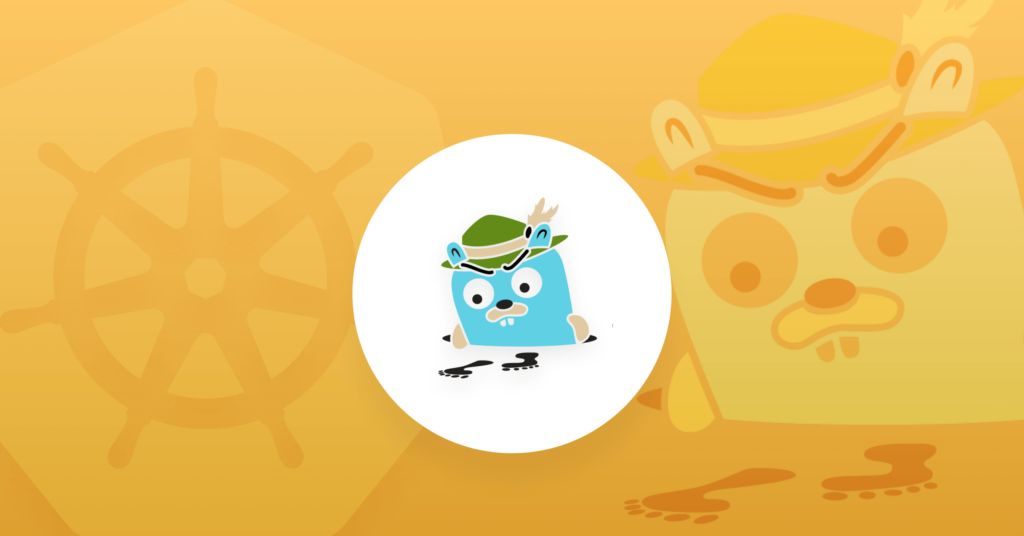 Logs, metrics, and traces are the three pillars of the Observability world. The distributed tracing world, in particular, has seen a lot of innovation in recent months, with OpenTelemetry standardization and with Jaeger open source project graduating from the CNCF incubation.
Logs, metrics, and traces are the three pillars of the Observability world. The distributed tracing world, in particular, has seen a lot of innovation in recent months, with OpenTelemetry standardization and with Jaeger open source project graduating from the CNCF incubation.
374. Post Mortem: Kubernetes Node OOM
 Production issues are never fun. They always seem to happen when you’re not at work, and the cause always seems to be silly. We recently had issues in our production Kubernetes cluster with nodes running out of memory, but the node recovered very quickly without any noticeable interruptions. In this story we will go over the specific issue that happened in our cluster, what the impact was, and how we will avoid this issue in the future.
Production issues are never fun. They always seem to happen when you’re not at work, and the cause always seems to be silly. We recently had issues in our production Kubernetes cluster with nodes running out of memory, but the node recovered very quickly without any noticeable interruptions. In this story we will go over the specific issue that happened in our cluster, what the impact was, and how we will avoid this issue in the future.
375. Security Best Practices for Kubernetes: 2020 Edition
 The New Cloud-Native World of Containers
The New Cloud-Native World of Containers
376. Things to Keep in Mind to Successfully Deploy Kubernetes in Production
 This blog covers additional factors you should take care of to successfully deploy Kubernetes cluster in production alongwith choosing a managed cloud. Read on.
This blog covers additional factors you should take care of to successfully deploy Kubernetes cluster in production alongwith choosing a managed cloud. Read on.
377. Deploying Complex Microservice Apps Using PMKFT [A How To Guide]
 In this tutorial we are going to expand our examples with deploying a more complex microservice. The idea is to make you more comfortable with the platform and to show you how you can leverage it for more advanced scenarios.
In this tutorial we are going to expand our examples with deploying a more complex microservice. The idea is to make you more comfortable with the platform and to show you how you can leverage it for more advanced scenarios.
378. Managing Microservices with Service Mesh: A Control Plane for your Application

379. 5 Tips to Be More Productive With Kubernetes
 I like to read about and see how people set up their environments and any tools, tips, and tricks they use to be more productive when working with Kubernetes and Istio. What follows is a collection of 5 tips and tools that I use daily, and I think it makes me more productive with Kubernetes and Istio.
I like to read about and see how people set up their environments and any tools, tips, and tricks they use to be more productive when working with Kubernetes and Istio. What follows is a collection of 5 tips and tools that I use daily, and I think it makes me more productive with Kubernetes and Istio.
380. Doing First Steps with the Kubernetes Operator
 This article demonstrates how you can use the Operator Lifecycle Manager to deploy a Kubernetes Operator to your cluster. Then, you will use the Operator to spin up an Elastic Cloud on Kubernetes (ECK) cluster.
This article demonstrates how you can use the Operator Lifecycle Manager to deploy a Kubernetes Operator to your cluster. Then, you will use the Operator to spin up an Elastic Cloud on Kubernetes (ECK) cluster.
381. Moving from CircleCI to Buildkite: Everything You Need to Know
 Buildkite is gaining momentum as an excellent CI tool, and I recently was involved in such a migration from CircleCI and wanted to share my experience.
Buildkite is gaining momentum as an excellent CI tool, and I recently was involved in such a migration from CircleCI and wanted to share my experience.
382. A Parable of Pricing, Processors, and Memory
 At PEAK6 Capital Management we operate a variety of different systems in
support of our trading teams. As we improve and evolve these systems, we
sometimes run into hurdles along the way that are not all that easy to
diagnose. This is the story of one of these hurdles our systems and core team ran into that came about while updating our pricing system.
At PEAK6 Capital Management we operate a variety of different systems in
support of our trading teams. As we improve and evolve these systems, we
sometimes run into hurdles along the way that are not all that easy to
diagnose. This is the story of one of these hurdles our systems and core team ran into that came about while updating our pricing system.
383. Dockershim Deprecation: Is Docker Truly out of Game?
 Dockershim deprecation only means the code maintenance of Dockershim in the code repository of Kubernetes will stop.
Dockershim deprecation only means the code maintenance of Dockershim in the code repository of Kubernetes will stop.
384. Cloud Me a River: Is Multi-Cloud a Poor Practice?
 What if you could just migrate between cloud providers in seconds while achieving the best cost and performance combination? CAST AI connects them
What if you could just migrate between cloud providers in seconds while achieving the best cost and performance combination? CAST AI connects them
385. Kubernetes Security 101: Cloud Native Runtime Security with Falco
 As Kubernetes continues to grow in adoption, it is important for us to know how to secure it. In a dynamic infrastructure platform such as Kubernetes
As Kubernetes continues to grow in adoption, it is important for us to know how to secure it. In a dynamic infrastructure platform such as Kubernetes
386. How to Configure And Monitor Apache Spark on Kubernetes
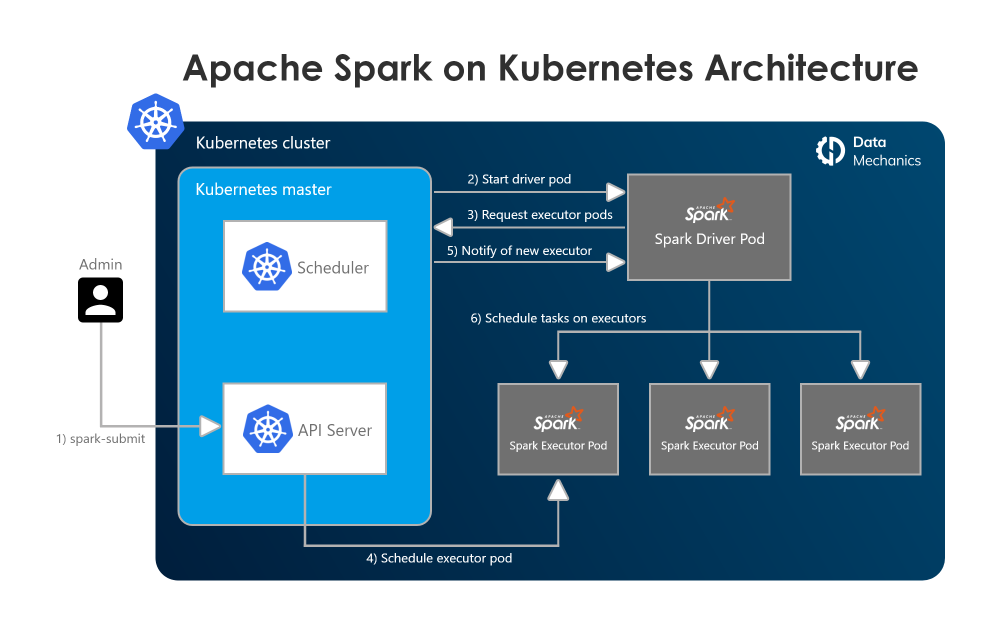 Earlier this year at Spark + AI Summit, we had the pleasure of presenting our session on the best practices and pitfalls of running Apache Spark on Kubernetes (K8s).
Earlier this year at Spark + AI Summit, we had the pleasure of presenting our session on the best practices and pitfalls of running Apache Spark on Kubernetes (K8s).
387. How To Use Brigade Tool For Event-Driven Scripting
 What is Brigade?
What is Brigade?
388. Using KubeMQ Bridges to Communicate Between Edge and Cloud Clusters
 Struggling to communicate between your edge sources and the home cloud? Messaging could be the solution.
Struggling to communicate between your edge sources and the home cloud? Messaging could be the solution.
389. Access AWS Services from Google Kubernetes Engine Securely [A How-To Guide]
 It is not a rare case when an application running on Google Kubernetes Engine (GKE) needs to access Amazon Web Services (AWS) APIs. Any application has needs. Maybe it needs to run an analytics query on Amazon Redshift, access data stored in Amazon S3 bucket, convert text to speech with Amazon Polly or use any other AWS service. This multi-cloud scenario is common nowadays, as companies are working with multiple cloud providers.
It is not a rare case when an application running on Google Kubernetes Engine (GKE) needs to access Amazon Web Services (AWS) APIs. Any application has needs. Maybe it needs to run an analytics query on Amazon Redshift, access data stored in Amazon S3 bucket, convert text to speech with Amazon Polly or use any other AWS service. This multi-cloud scenario is common nowadays, as companies are working with multiple cloud providers.
390. How to Become a Kubernetes Application Developer
 When it comes to certification, there are two main Kubernetes certifications available in the market.
When it comes to certification, there are two main Kubernetes certifications available in the market.
391. Developing, Deploying and Testing Flask Applications on Kubernetes - Part I
 In this step by a step blog post, that illustrates how to integrate Python Flask applications with Docker and run them in a Kubernetes cluster, we will cover the following topics:
In this step by a step blog post, that illustrates how to integrate Python Flask applications with Docker and run them in a Kubernetes cluster, we will cover the following topics:
392. Managing Local Kubernetes Cluster with Lightweight Kubernetes and Traefik Proxy
 Motivation
Motivation
393. KubeMQ Build & Deploy Test Drive: My First Impressions
 Meta: KubeMQ, makers of the eponymous Kubernetes-native message queue, has a new web-based tool that promises to make setup a breeze. Let's try it out!
Meta: KubeMQ, makers of the eponymous Kubernetes-native message queue, has a new web-based tool that promises to make setup a breeze. Let's try it out!
394. AppOps with Kubernetes and Devtron: The Perfect Fit
 Kubernetes needs no introduction in this cloud-native world. It was born when I was a middle-aged man. Years later, I am still as young as earlier (take with a pinch of salt) while Kubernetes grew out to be a fine tool that outperformed other platforms in enabling operational efficiency and application resilience.
Kubernetes needs no introduction in this cloud-native world. It was born when I was a middle-aged man. Years later, I am still as young as earlier (take with a pinch of salt) while Kubernetes grew out to be a fine tool that outperformed other platforms in enabling operational efficiency and application resilience.
395. Rethinking Programming: From Code to Cloud
 Earlier, developers simply wrote their program, built it and ran it. Today, developers need to also think of the various ways of running it whether it be as a binary on a machine (virtual most likely), by packaging it into a container, by making that container a part of a bigger deployment (K8s) or by deploying it into a serverless environment or a service mesh. However, these deployment options are not part of the programming experience for a developer. The developer has to write code in a certain way to work well in a given execution environment, and removing this from the programming problem isn’t good.
Earlier, developers simply wrote their program, built it and ran it. Today, developers need to also think of the various ways of running it whether it be as a binary on a machine (virtual most likely), by packaging it into a container, by making that container a part of a bigger deployment (K8s) or by deploying it into a serverless environment or a service mesh. However, these deployment options are not part of the programming experience for a developer. The developer has to write code in a certain way to work well in a given execution environment, and removing this from the programming problem isn’t good.
396. How to Deploy ML Workflows on LKE with Kubeflow
 Introduction
Introduction
397. How Kubernetes Can Make Your High Load Project Viable in 2020

398. Kubernetes Explained Simply: #2 Kubectl Hack (List Running Images)
 Running Kubernetes in production means taking inventory. A LOT. Are any of our pods running that version of Ubuntu base image affected by the new CVE?
Running Kubernetes in production means taking inventory. A LOT. Are any of our pods running that version of Ubuntu base image affected by the new CVE?
399. Modern Day Challenges to Monitoring Microservices
 Monitoring microservices and cloud-native systems is challenging. In this article: which open source is best suited in Kubernetes environments?
Monitoring microservices and cloud-native systems is challenging. In this article: which open source is best suited in Kubernetes environments?
400. AppOps with Kubernetes and Devtron: The Perfect Fit
 Kubernetes needs no introduction in this cloud-native world. It was born when I was a middle-aged man. Years later, I am still as young as earlier (take with a pinch of salt) while Kubernetes grew out to be a fine tool that outperformed other platforms in enabling operational efficiency and application resilience.
Kubernetes needs no introduction in this cloud-native world. It was born when I was a middle-aged man. Years later, I am still as young as earlier (take with a pinch of salt) while Kubernetes grew out to be a fine tool that outperformed other platforms in enabling operational efficiency and application resilience.
401. The Apprentice's Guide to Kubernetes
 Let's dig into Kubernetes, a powerful orchestrator that will ease deployment and automatically manage your applications on a set of machines.
Let's dig into Kubernetes, a powerful orchestrator that will ease deployment and automatically manage your applications on a set of machines.
402. Sysdig: What It Is and How to Use It
 Sysdig is a universal system visibility tool with support for containers. What makes Sysdig special, is that it hooks itself into the machine's kernel and segregates the information on a per-container basis.
Sysdig is a universal system visibility tool with support for containers. What makes Sysdig special, is that it hooks itself into the machine's kernel and segregates the information on a per-container basis.
403. Comparing Kubernetes and Nomad in 2022
 Both Nomad and Kubernetes are good systems for running containerized applications, but they are very different.
Both Nomad and Kubernetes are good systems for running containerized applications, but they are very different.
404. Kubernetes Scheduler: Explained in Plain English with Comics
 In Kubernetes pod is the smallest deployable unit of workload. So the obvious question :
In Kubernetes pod is the smallest deployable unit of workload. So the obvious question :
405. Top Kubernetes Consulting Service Providers: 2021 Edition
 Kubernetes opens up the potential for better application management and deployment automation.
Kubernetes opens up the potential for better application management and deployment automation.
406. Containerization of Spark Python Using Kubernetes
 Introduction
Introduction
407. CI/CD Workflow for SpringBoot Applications on Kubernetes via Skaffold
 In this article, we'll explain how to create a CI/CD workflow for a SpringBoot Application deployed to Kubernetes using Skaffold.
In this article, we'll explain how to create a CI/CD workflow for a SpringBoot Application deployed to Kubernetes using Skaffold.
408. Kubernetes CRDs Explained: What are They and How to Use Them to Extend Your Kubernetes APIs
 CRD is a special resource in Kubernetes. Read along if you want to expand upon the capabilities of regular Kubernetes and create your own solution.
CRD is a special resource in Kubernetes. Read along if you want to expand upon the capabilities of regular Kubernetes and create your own solution.
409. Kubernetes And Containers, Explained ☸️💡🎉
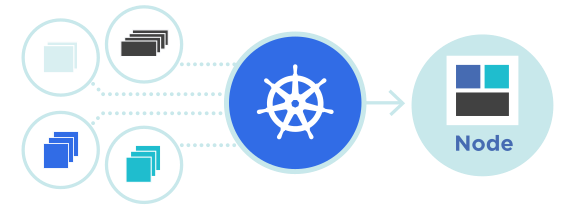 Kubernetes is the de facto standard for running containerized applications. Kubernetes (K8s) is an open-source system for automating deployment, scaling, and management of containerized applications.
Kubernetes is the de facto standard for running containerized applications. Kubernetes (K8s) is an open-source system for automating deployment, scaling, and management of containerized applications.
410. The Secret To Succesully Simulate An Attack With Gremlin To Test Kubernetes
 Gremlin is a leading software company focusing on chaos-test in the market. It also has a tool similar to Chaos Monkey which belongs to Netflix, but is more customized to test the system with random loads or scheduled shutdowns. In the article below we will be testing a simple Kubernetes cluster running on EKS with Chaos Test.
Gremlin is a leading software company focusing on chaos-test in the market. It also has a tool similar to Chaos Monkey which belongs to Netflix, but is more customized to test the system with random loads or scheduled shutdowns. In the article below we will be testing a simple Kubernetes cluster running on EKS with Chaos Test.
411. Kubernetes scheduler visually explained in plain English with a story
 In Kubernetes pod is the smallest deployable unit of workload. So the obvious question :
In Kubernetes pod is the smallest deployable unit of workload. So the obvious question :
412. Kuma and Prometheus for Observability in Kubernetes Microservices Clusters
 A year ago, Harry Bagdi wrote an amazingly helpful blog post (link at bottom of article) on observability for microservices. And by comparing titles, it becomes obvious that my blog post draws inspiration from his work.
A year ago, Harry Bagdi wrote an amazingly helpful blog post (link at bottom of article) on observability for microservices. And by comparing titles, it becomes obvious that my blog post draws inspiration from his work.
413. AWS' Karpenter Autoscaler and How it Stacks Up Against CAST AI
 What exactly is AWS Karpenter, how does it work, and how does it differ from CAST AI autoscaling mechanisms? Here's the answer.
What exactly is AWS Karpenter, how does it work, and how does it differ from CAST AI autoscaling mechanisms? Here's the answer.
414. The HackerNoon Podcast: Managing Databases on Kubernetes with Anil Kumar
 Amy Tom talks to Anil Kumar, the Product Manager at Couchbase, about becoming a Product Manager, writing his book, and creating a multi-cloud strategy.
Amy Tom talks to Anil Kumar, the Product Manager at Couchbase, about becoming a Product Manager, writing his book, and creating a multi-cloud strategy.
415. Cloud Native Applications: Creating a Mail Server Environment with Docker
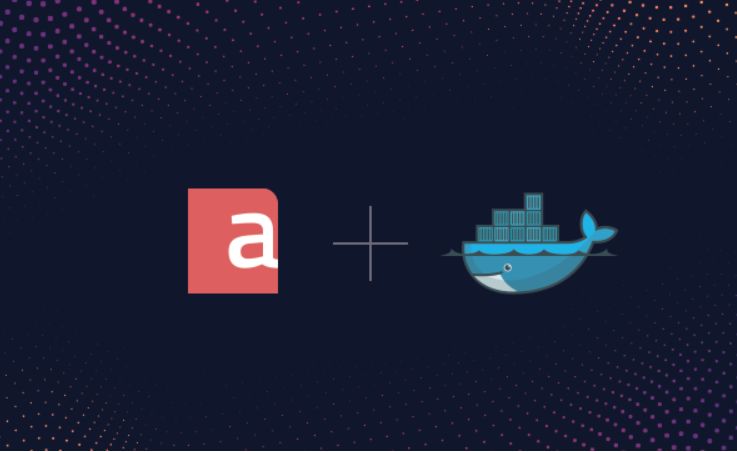 We’ve all been there. You’ve read a lot about the basics of Docker, Kubernetes, Pods, ReplicaSets, Deployments & more. The different parts that are used to build cloud native applications.
We’ve all been there. You’ve read a lot about the basics of Docker, Kubernetes, Pods, ReplicaSets, Deployments & more. The different parts that are used to build cloud native applications.
416. Gradual Code Releases: An In-House Kubernetes Canary Controller
 Our short-term strategy involved developing an in-house Canary deployment process powered by a custom Kubernetes controller.
Our short-term strategy involved developing an in-house Canary deployment process powered by a custom Kubernetes controller.
417. CKAD and CKA Certifications: Which to Take First and How to Prepare
 With around 50% developers CKA or CKAD certified, we share our experiences, study material, mistakes to avoid, FAQ, etc. about the CKA and CKAD certification.
With around 50% developers CKA or CKAD certified, we share our experiences, study material, mistakes to avoid, FAQ, etc. about the CKA and CKAD certification.
418. The Essential Guide to Kubernetes Virtual Clusters
 Virtual clusters are Kubernetes clusters that run on top of other Kubernetes clusters and don't need any extra resources
Virtual clusters are Kubernetes clusters that run on top of other Kubernetes clusters and don't need any extra resources
419. Introduction to Buildah: A CLI Tool For Building Images
 Buildah is a tool for building OCI-compatible images through a lower-level coreutils interface. Similar to Podman, Buildah doesn't depend on a daemon such as Docker or CRI-O, and it doesn't require root privileges. Buildah provides a command-line tool that replicates all the commands found in a Dockerfile. This allows you to issue Buildah commands from a scripting language such as Bash.
Buildah is a tool for building OCI-compatible images through a lower-level coreutils interface. Similar to Podman, Buildah doesn't depend on a daemon such as Docker or CRI-O, and it doesn't require root privileges. Buildah provides a command-line tool that replicates all the commands found in a Dockerfile. This allows you to issue Buildah commands from a scripting language such as Bash.
Thank you for checking out the 419 most read stories about Kubernetes on HackerNoon.
Visit the /Learn Repo to find the most read stories about any technology.

